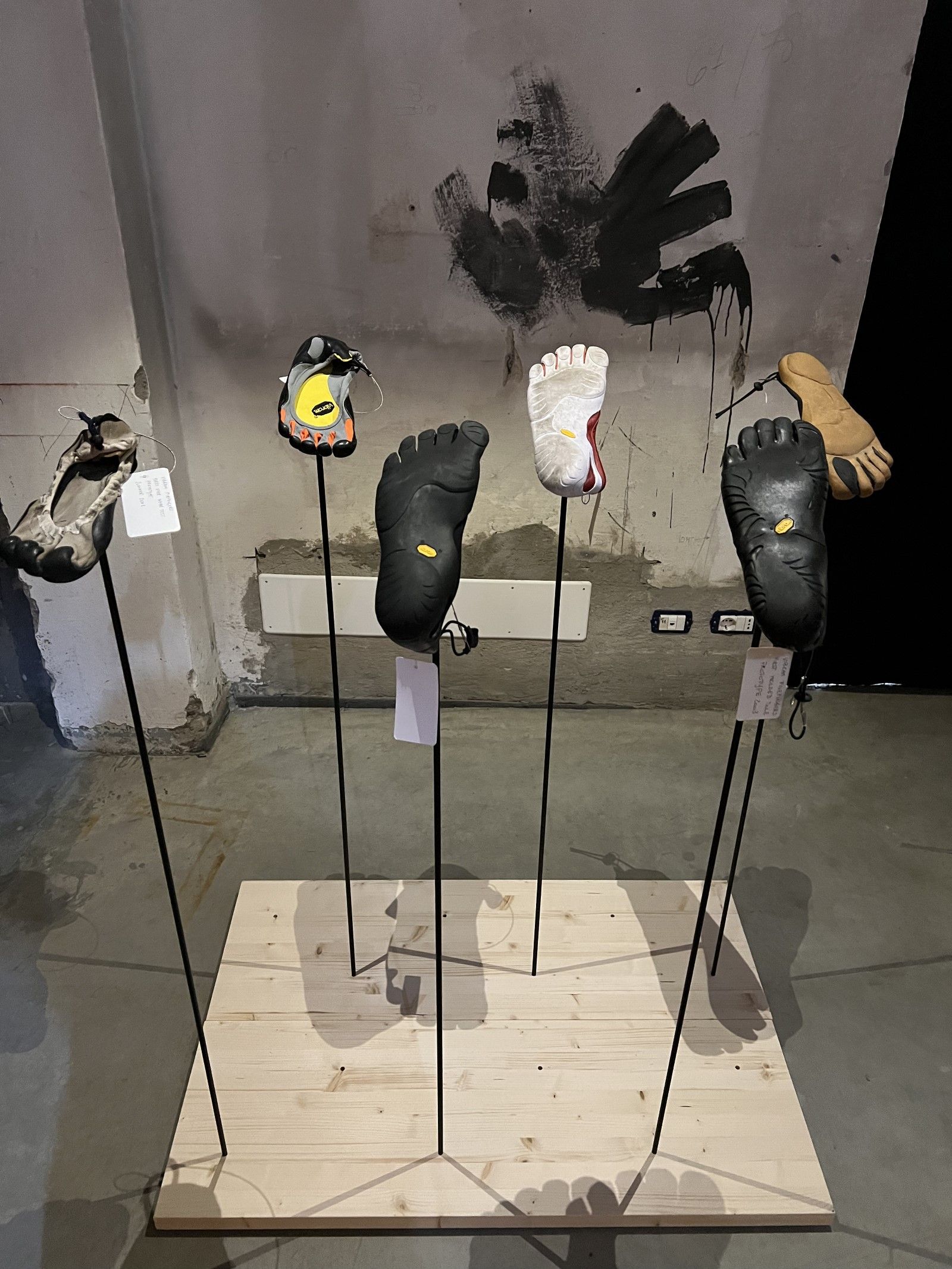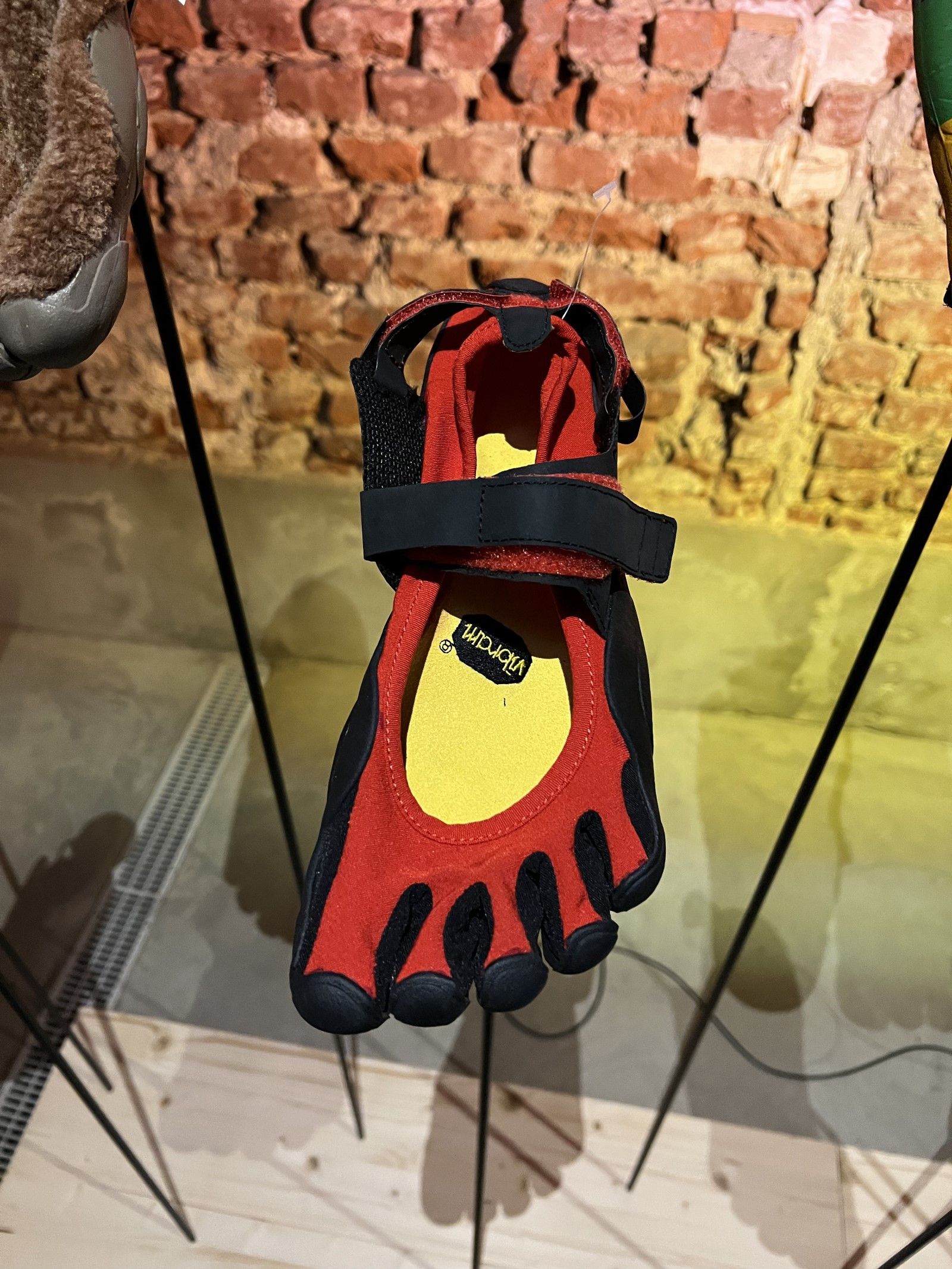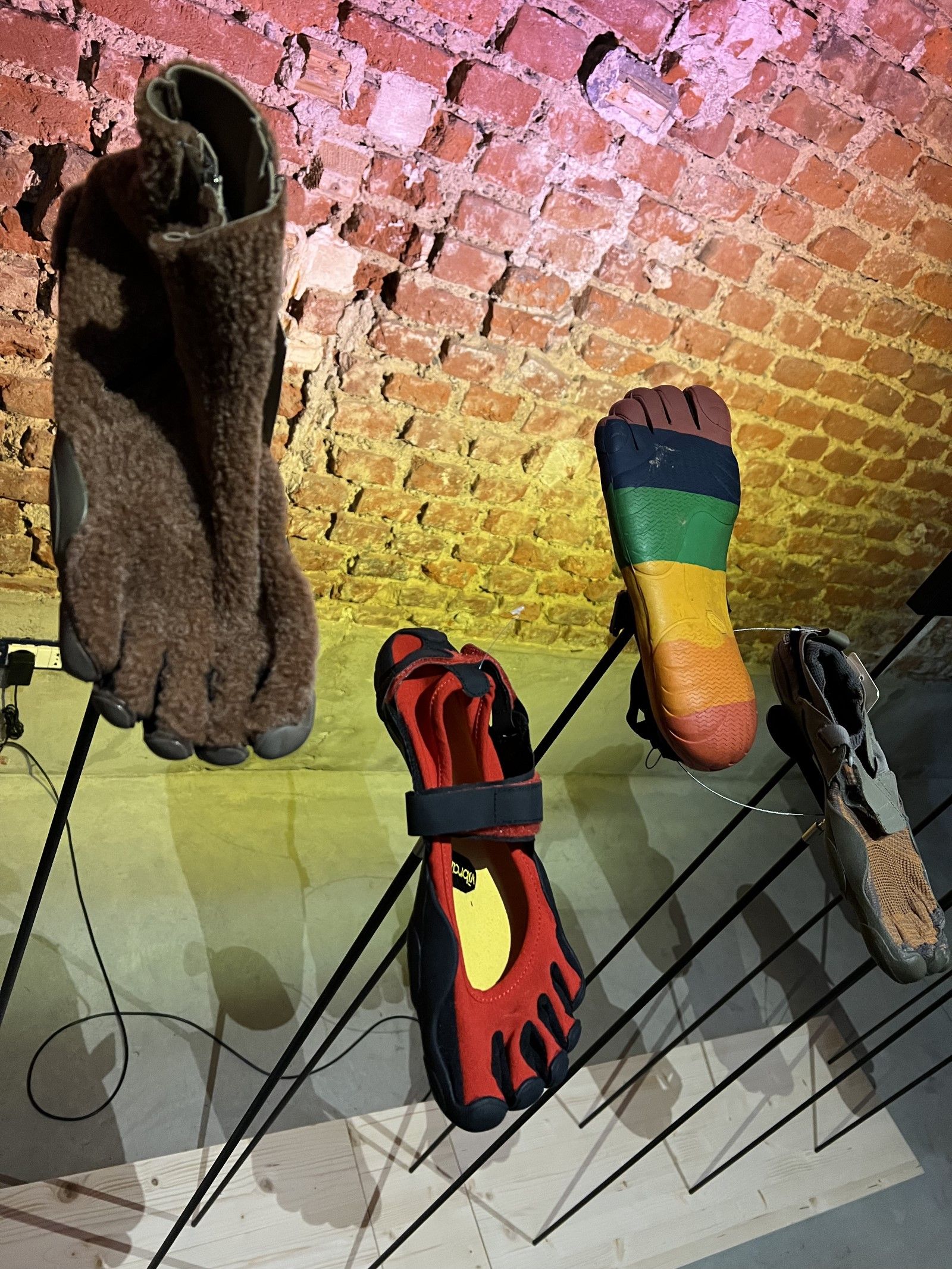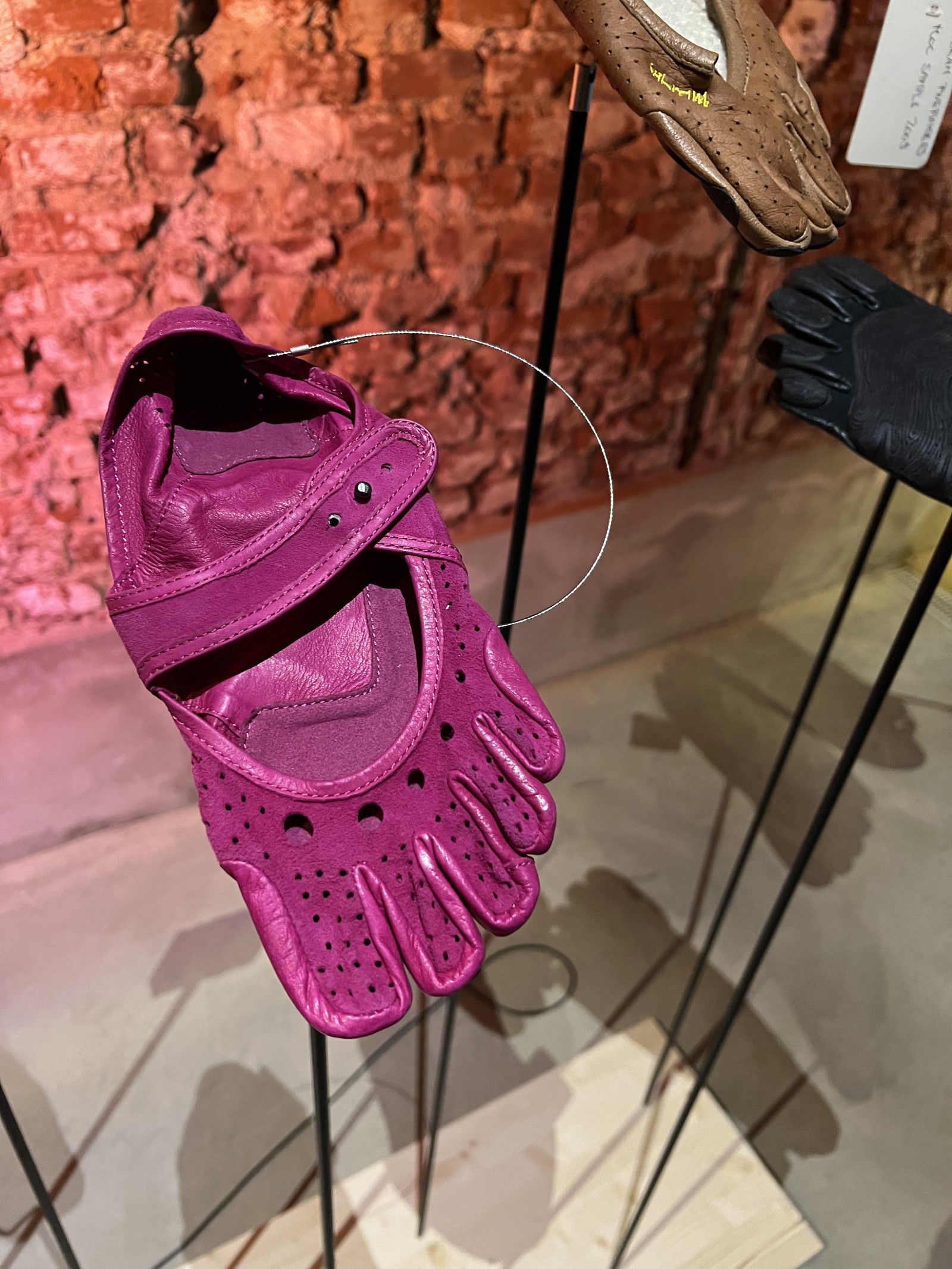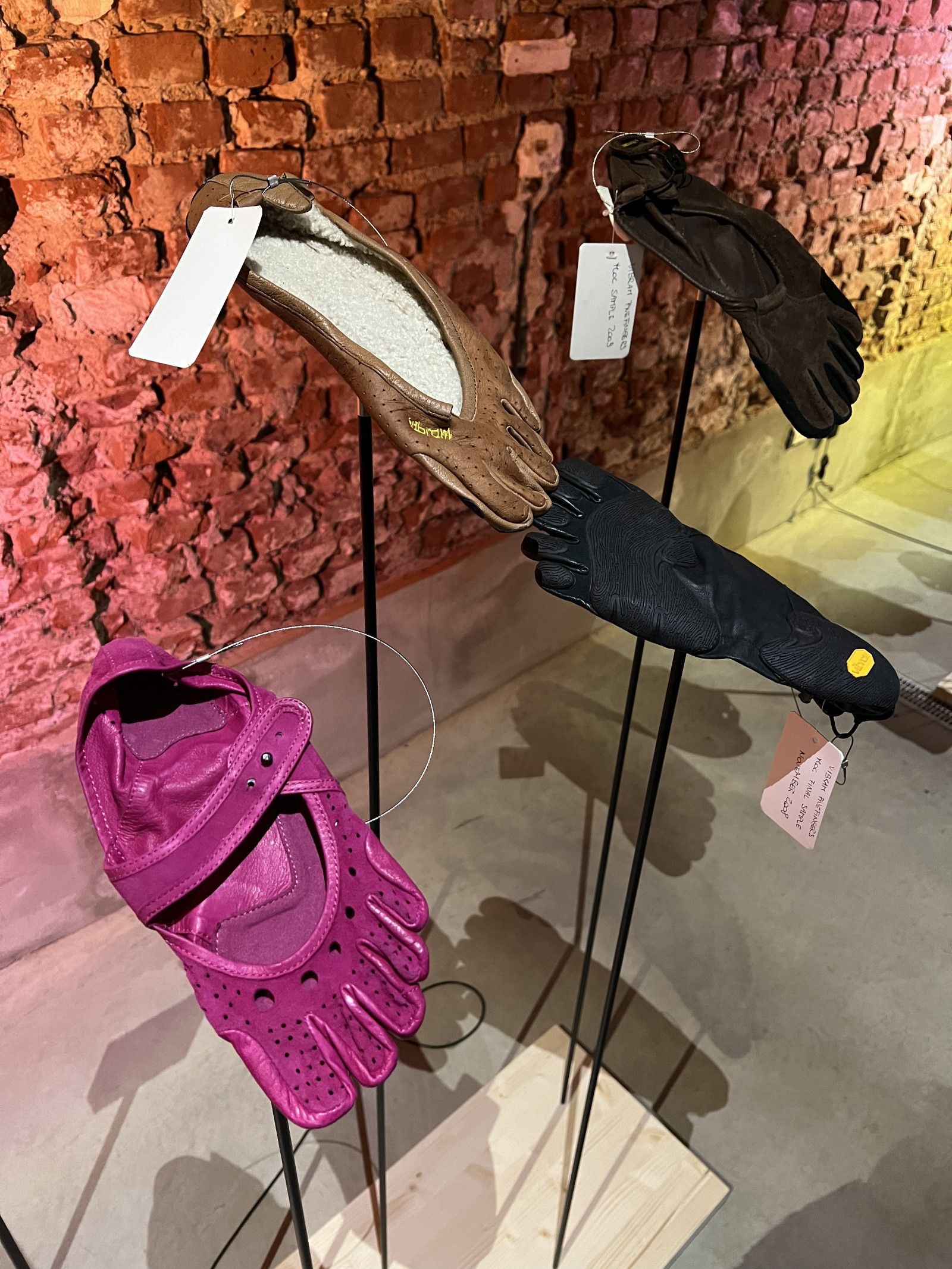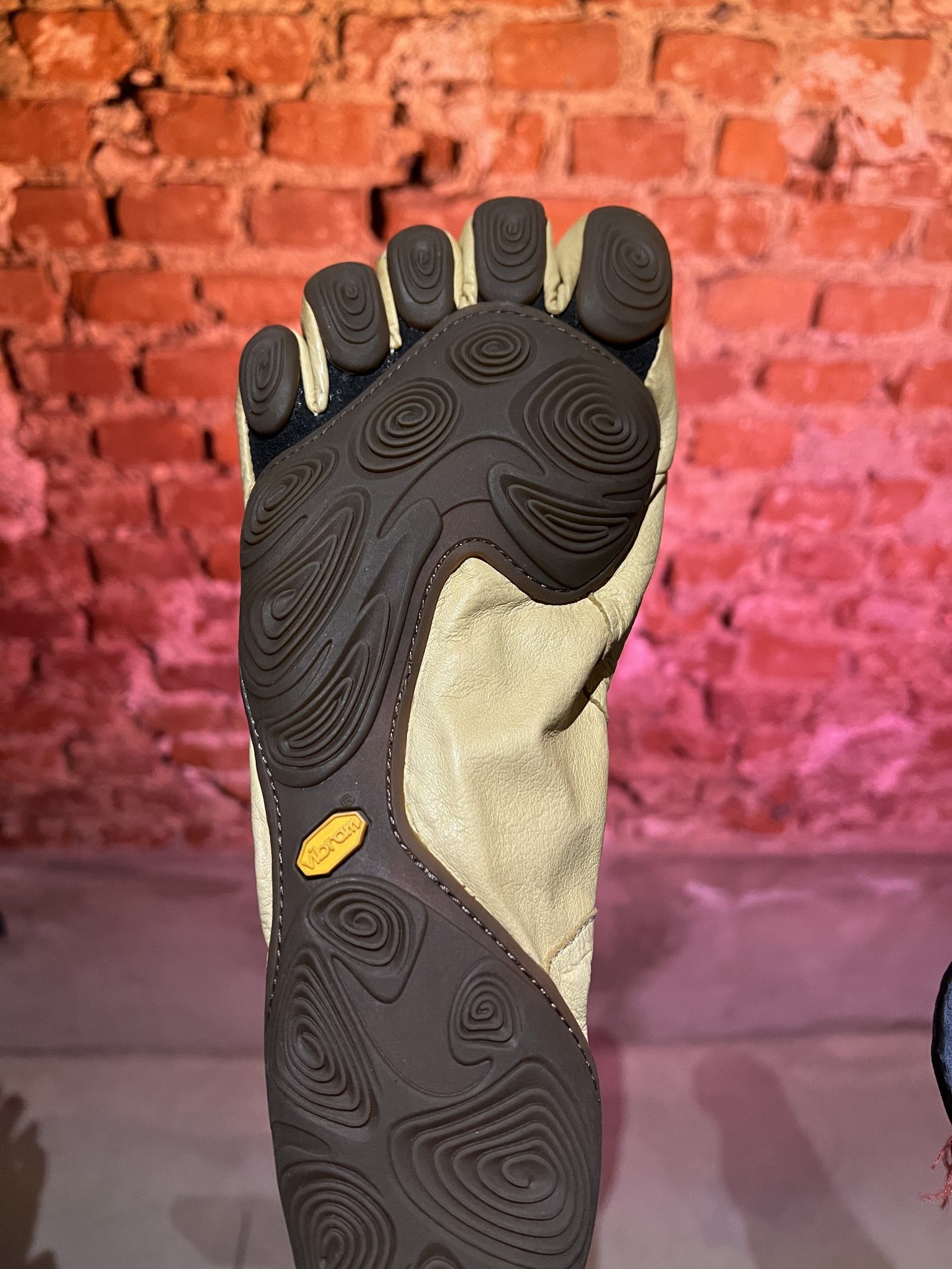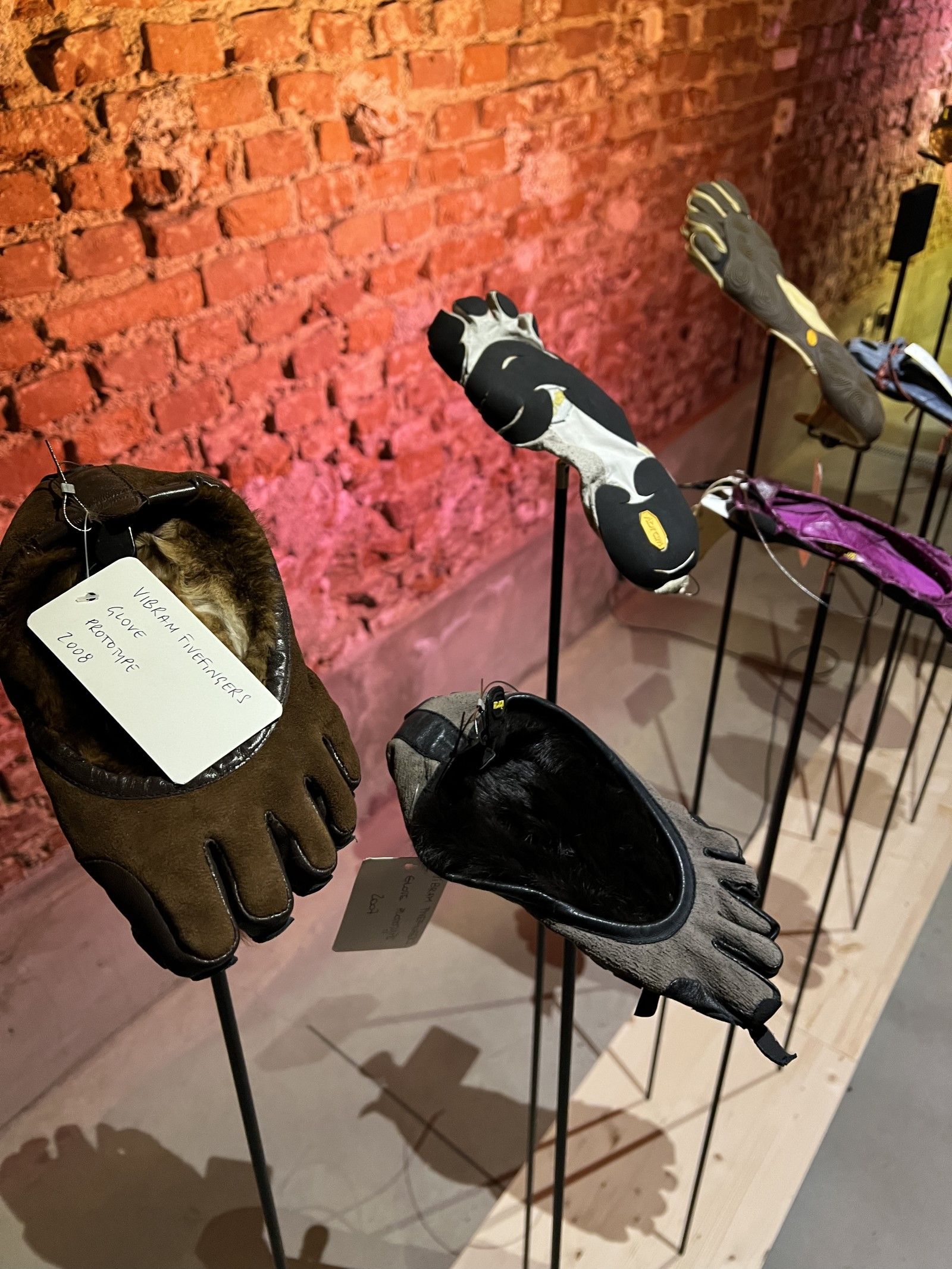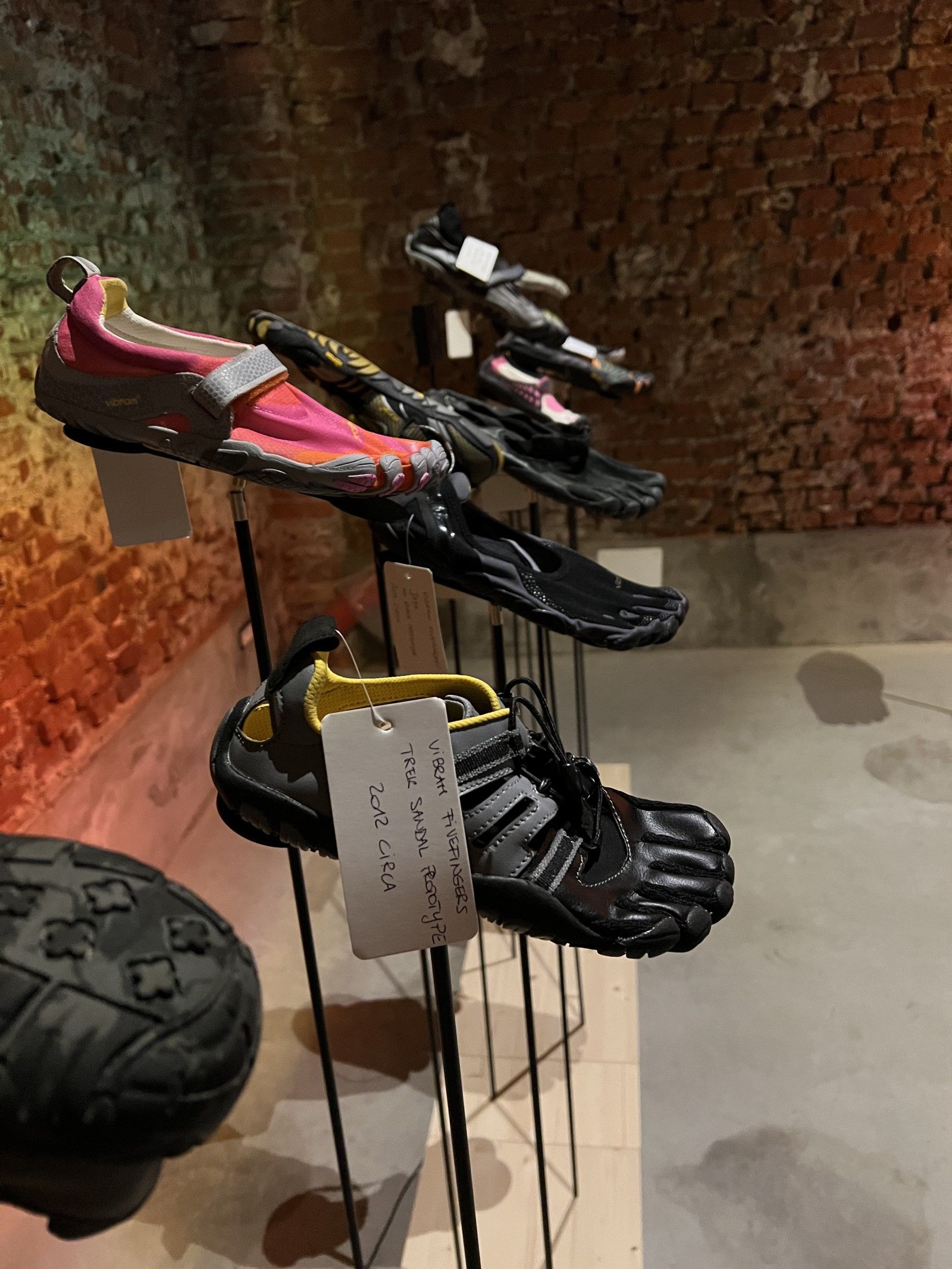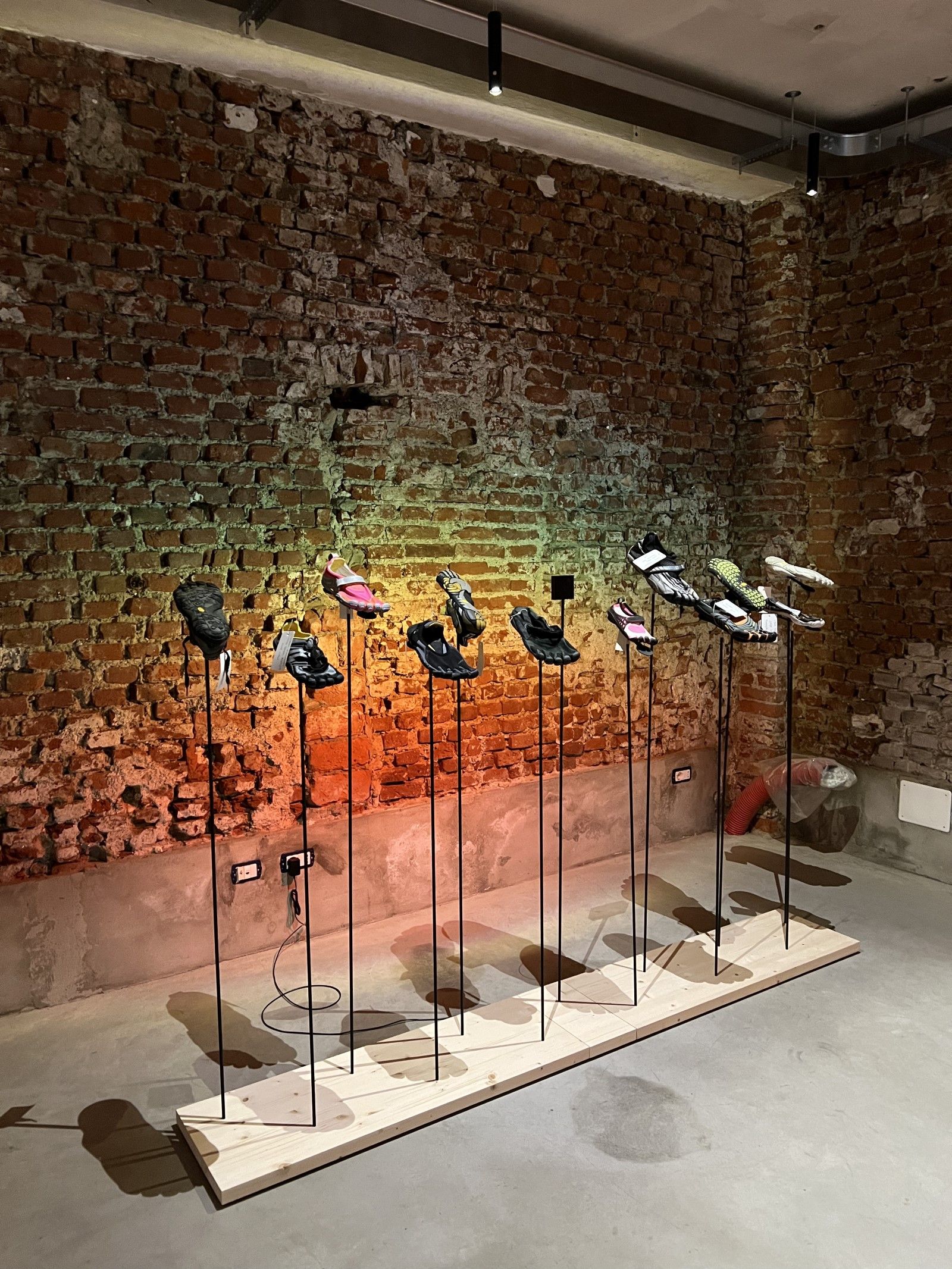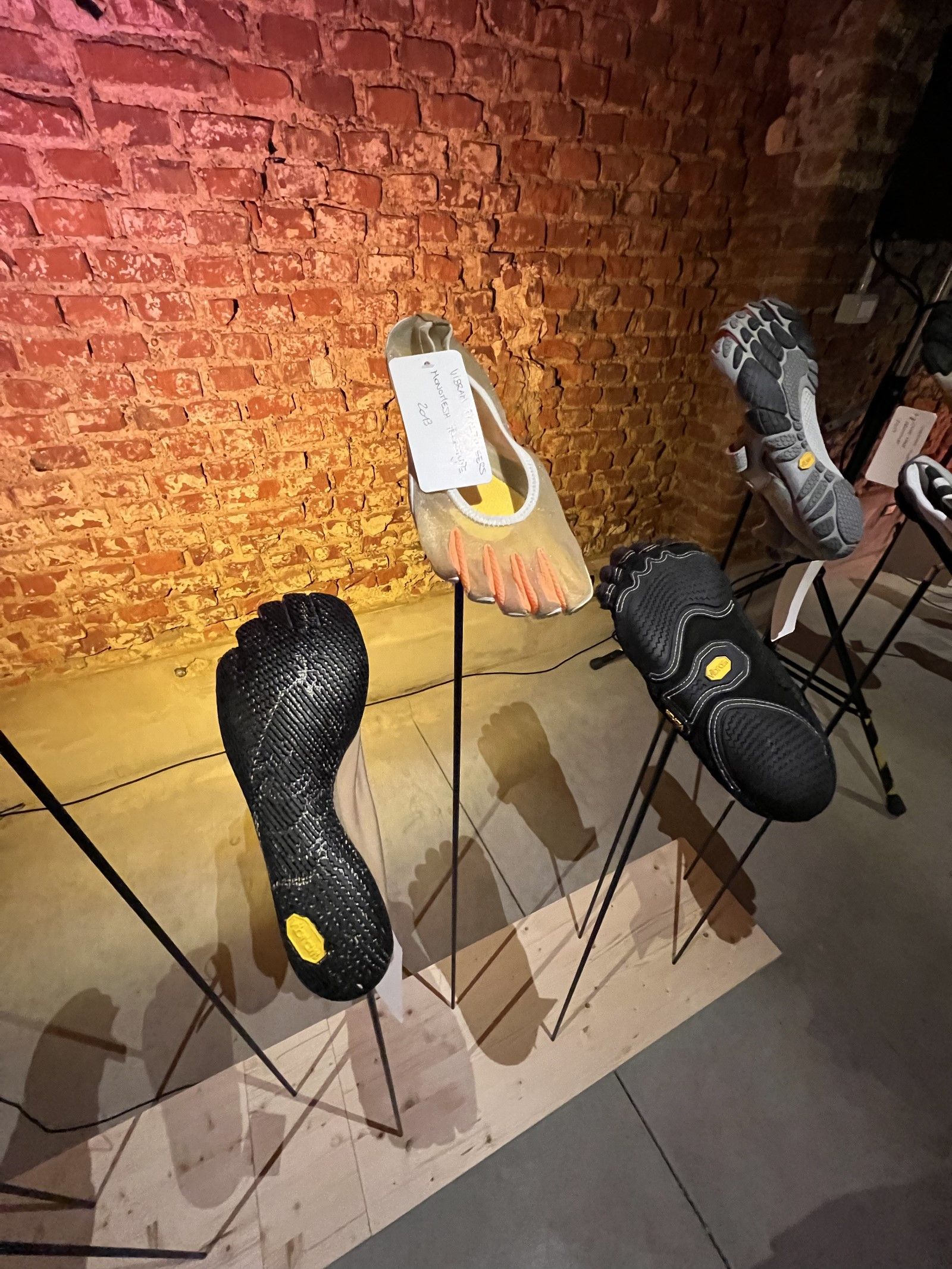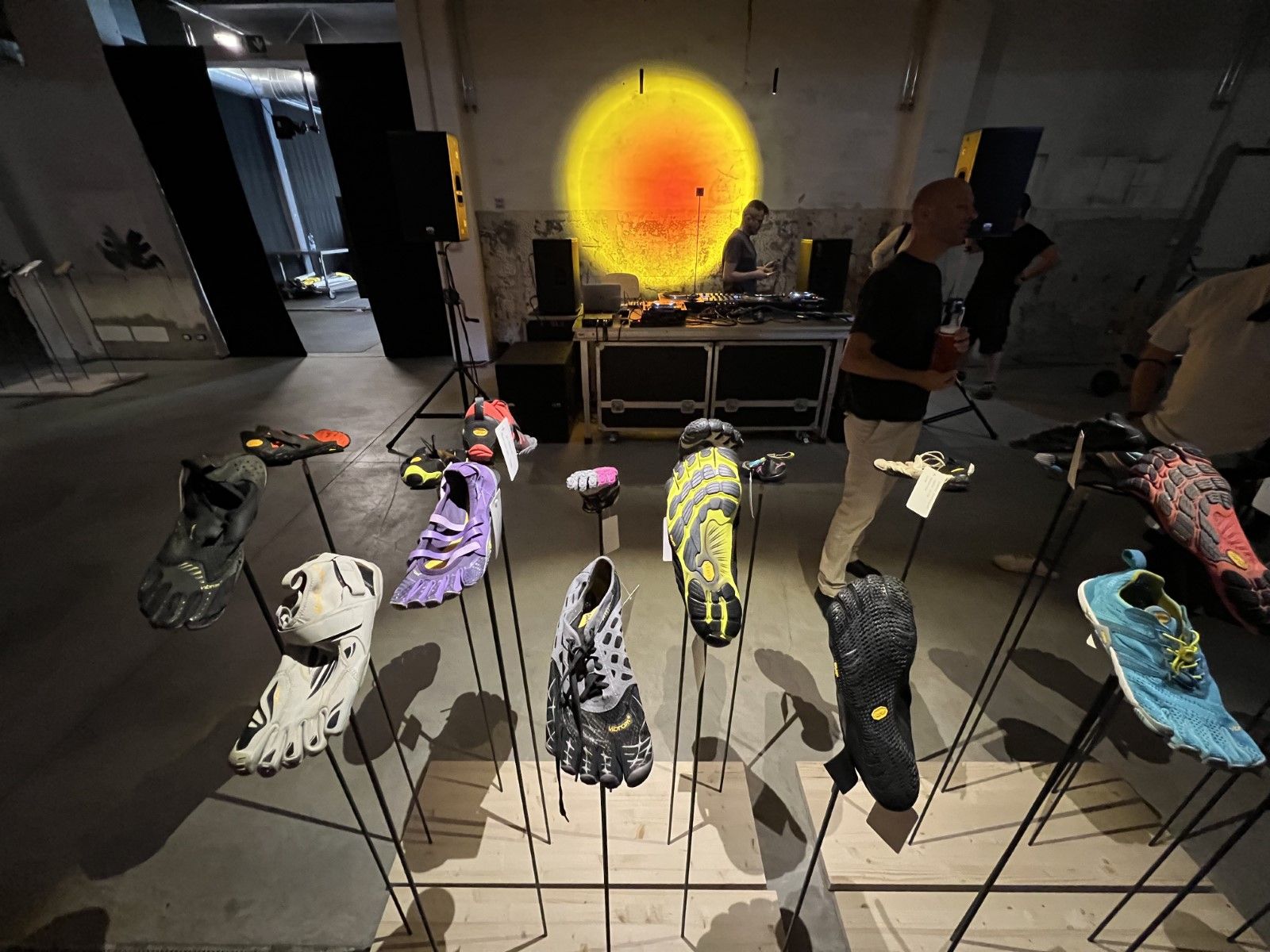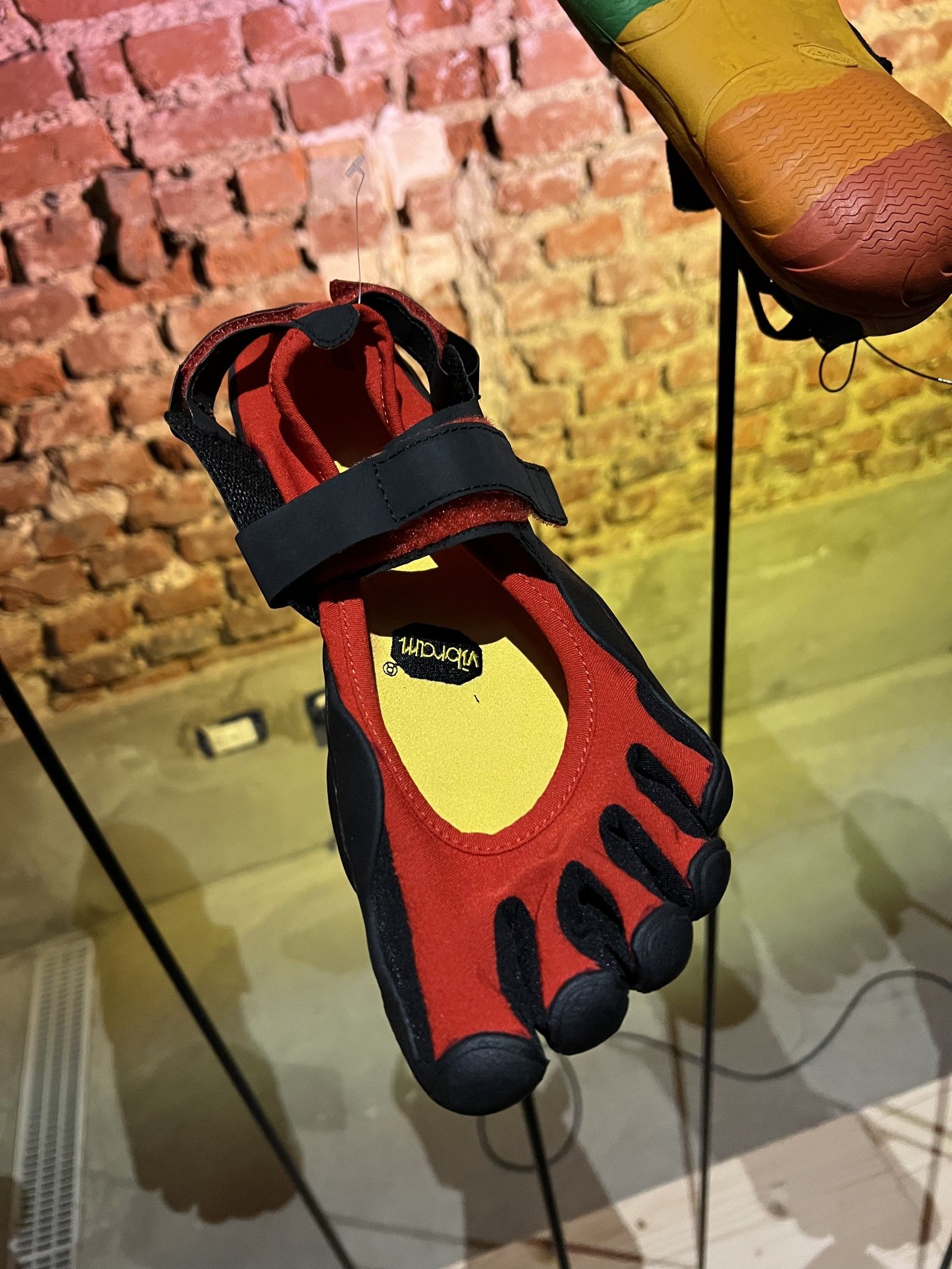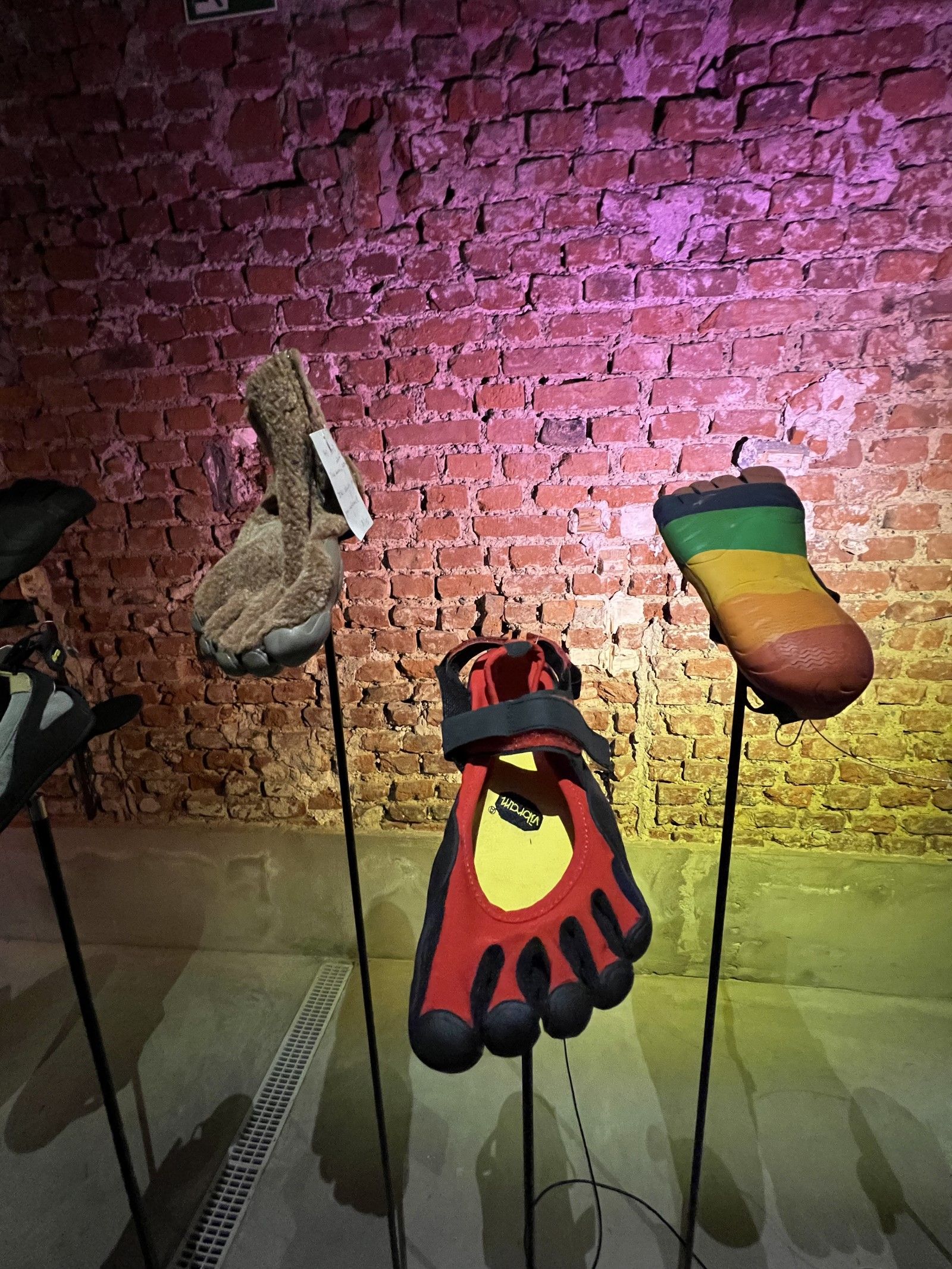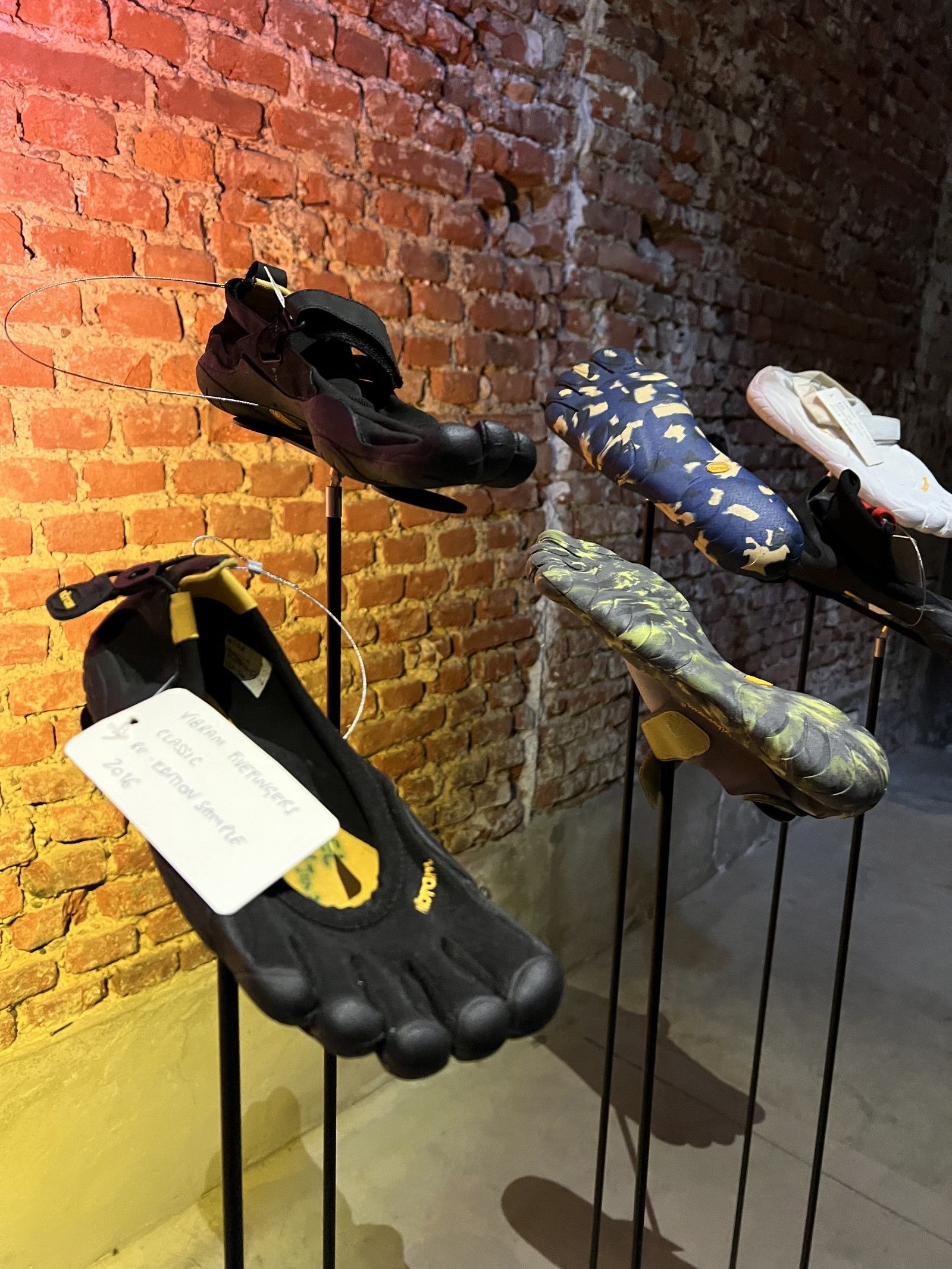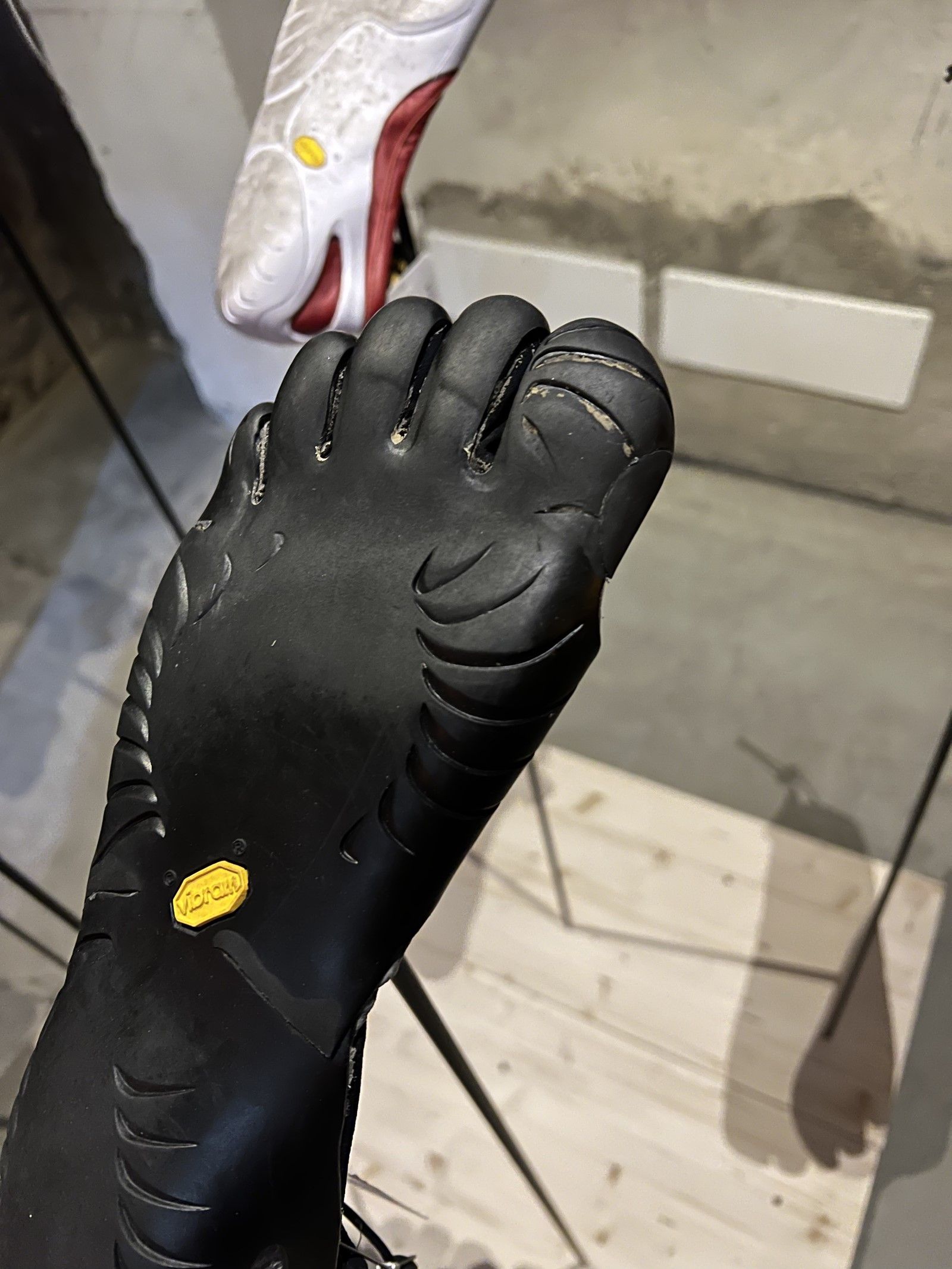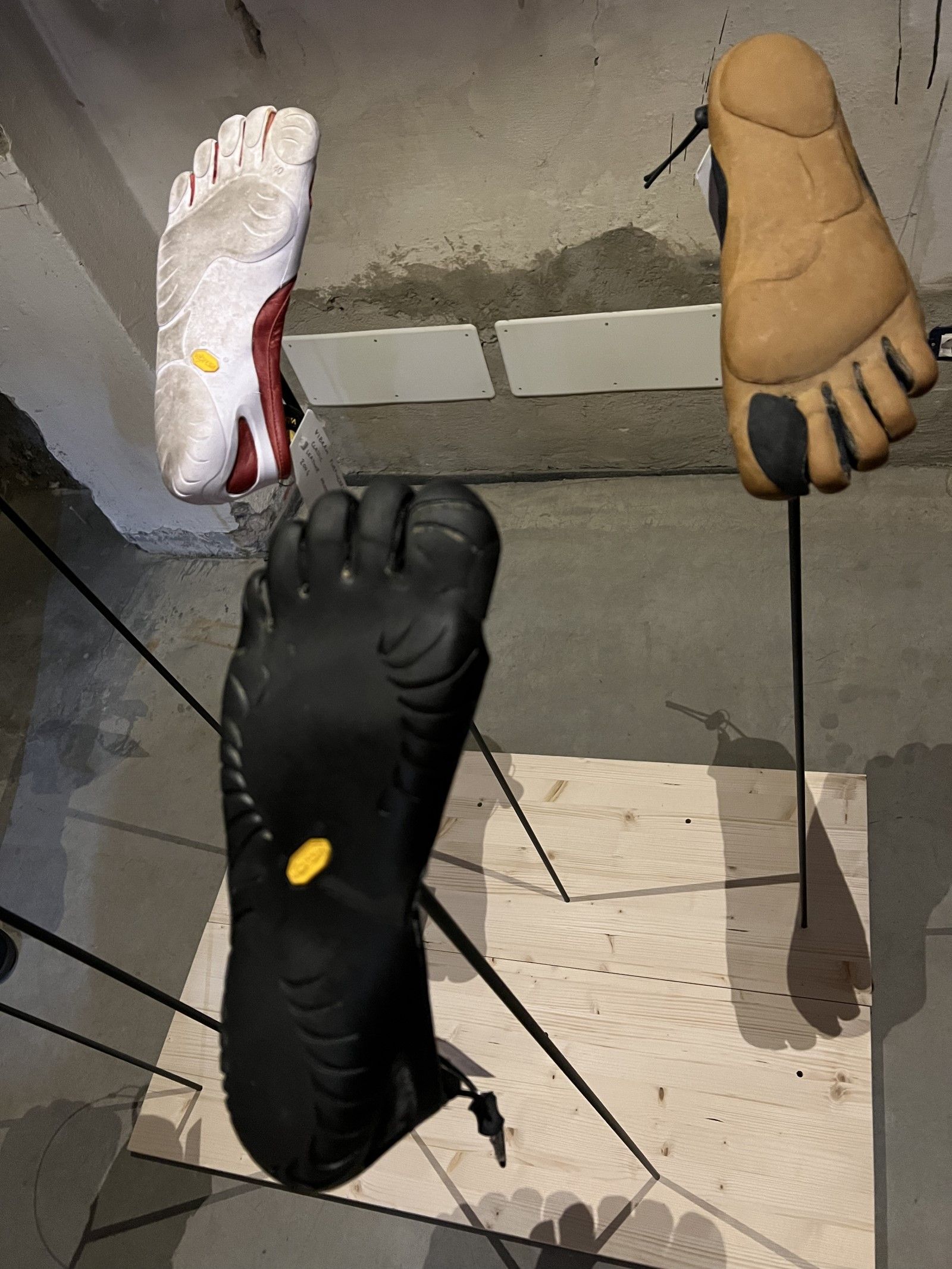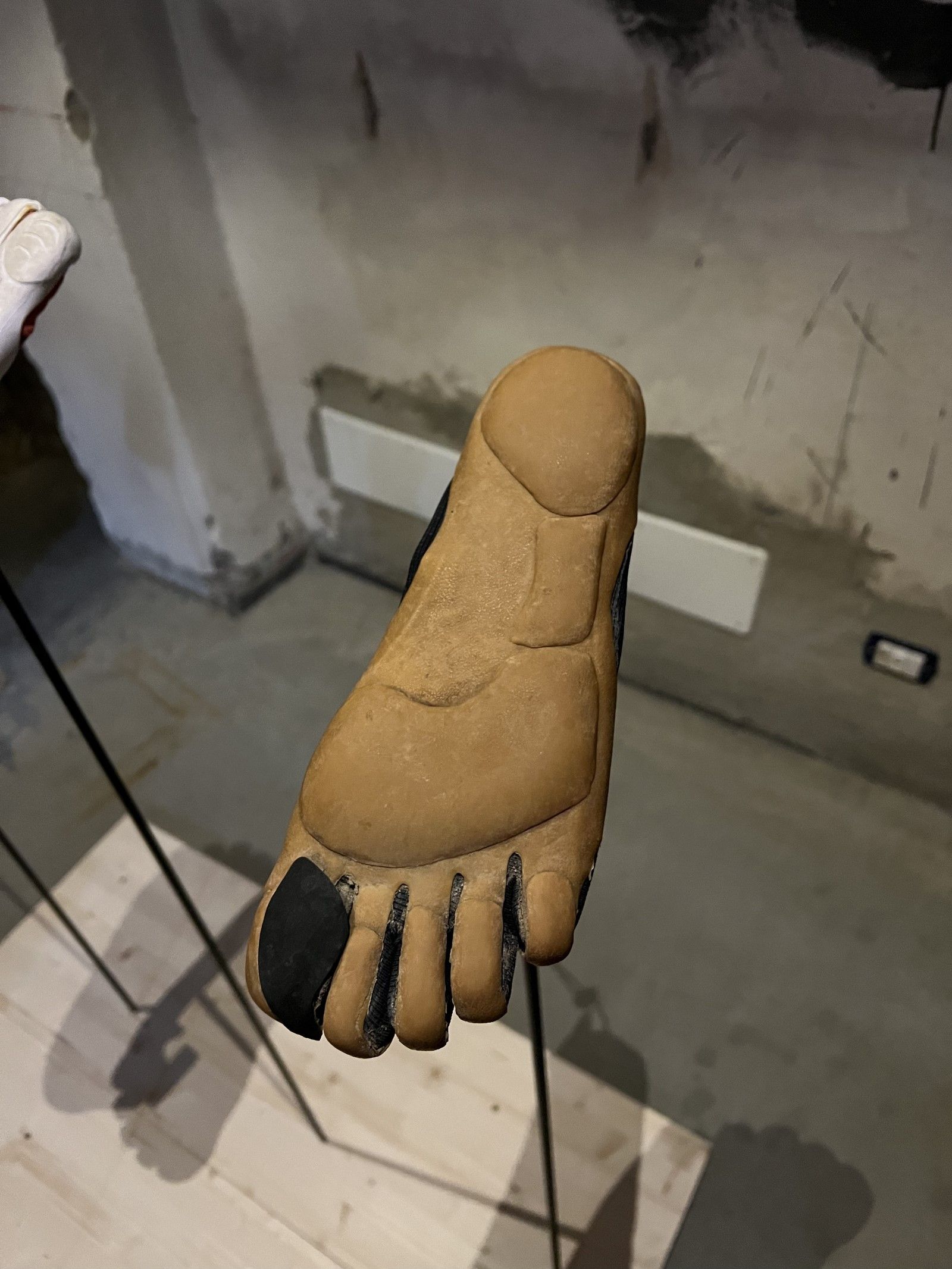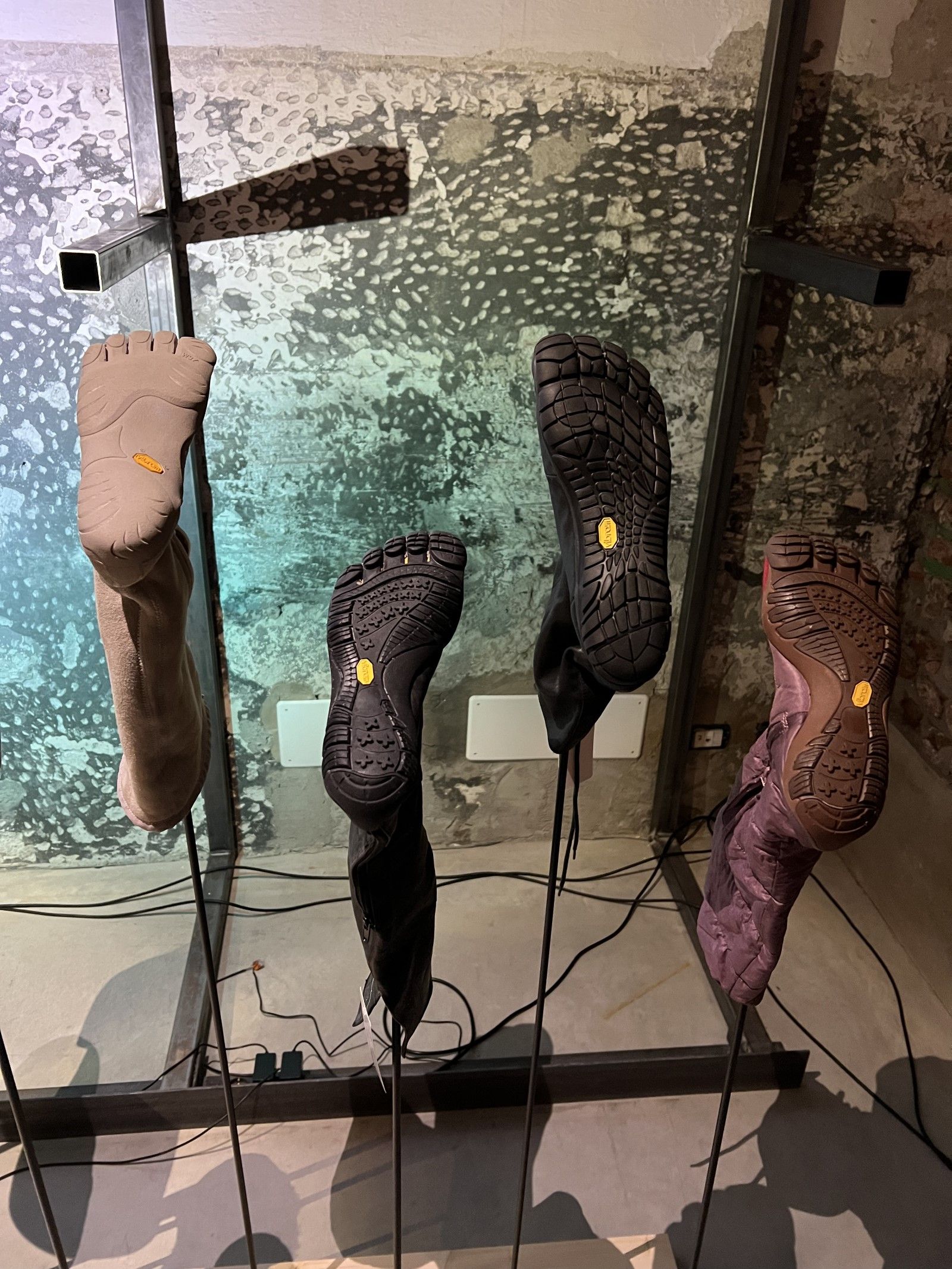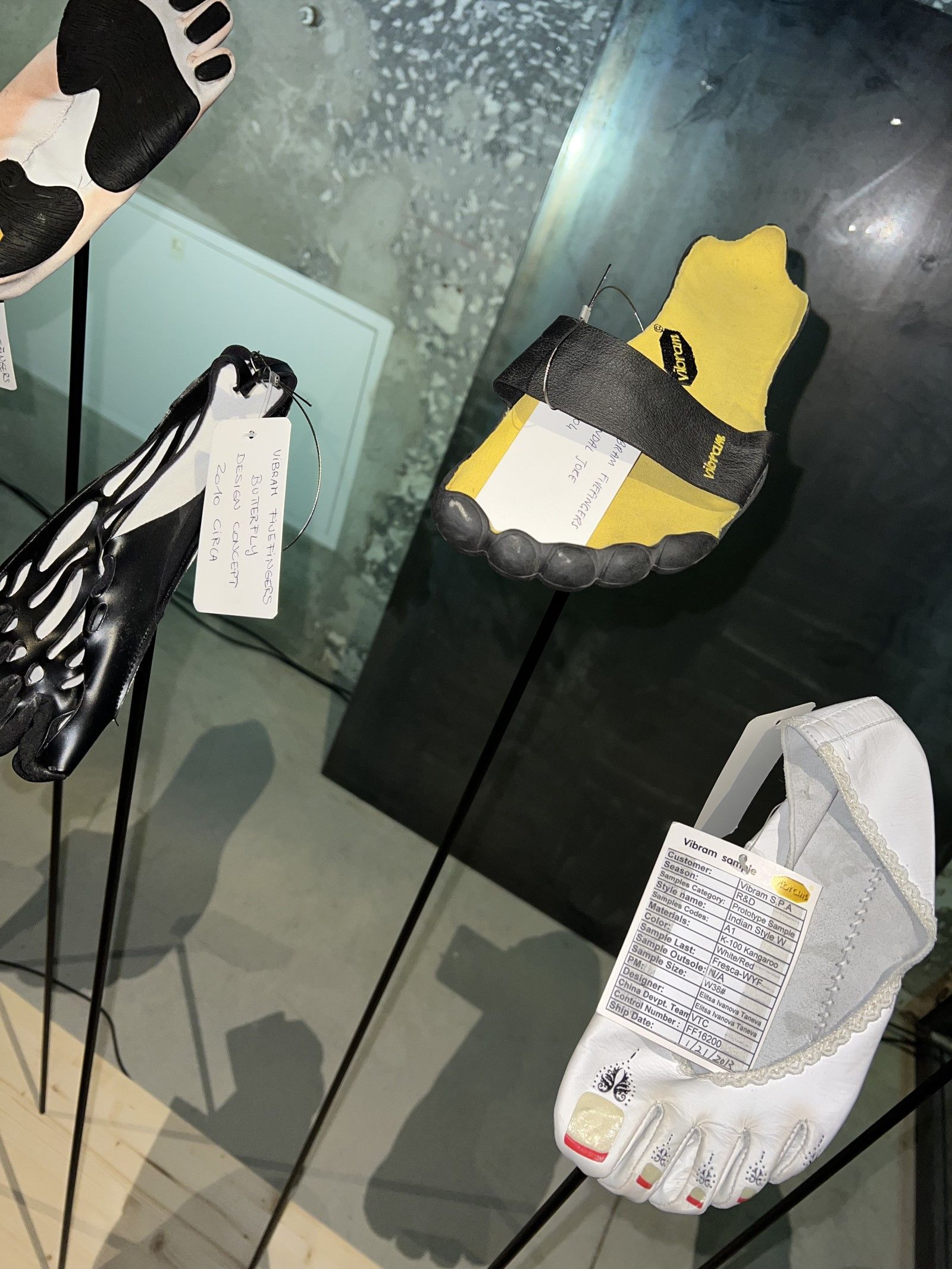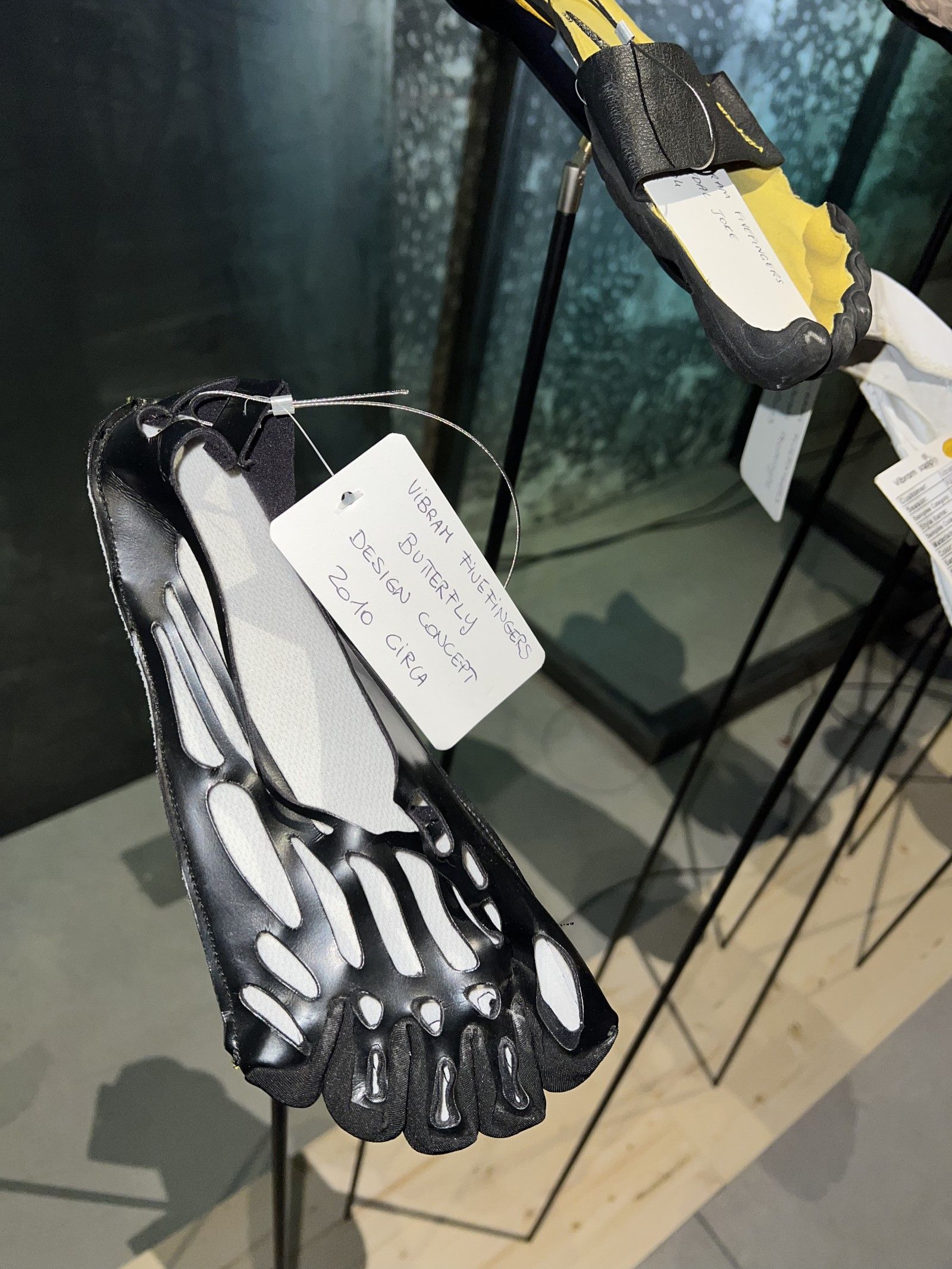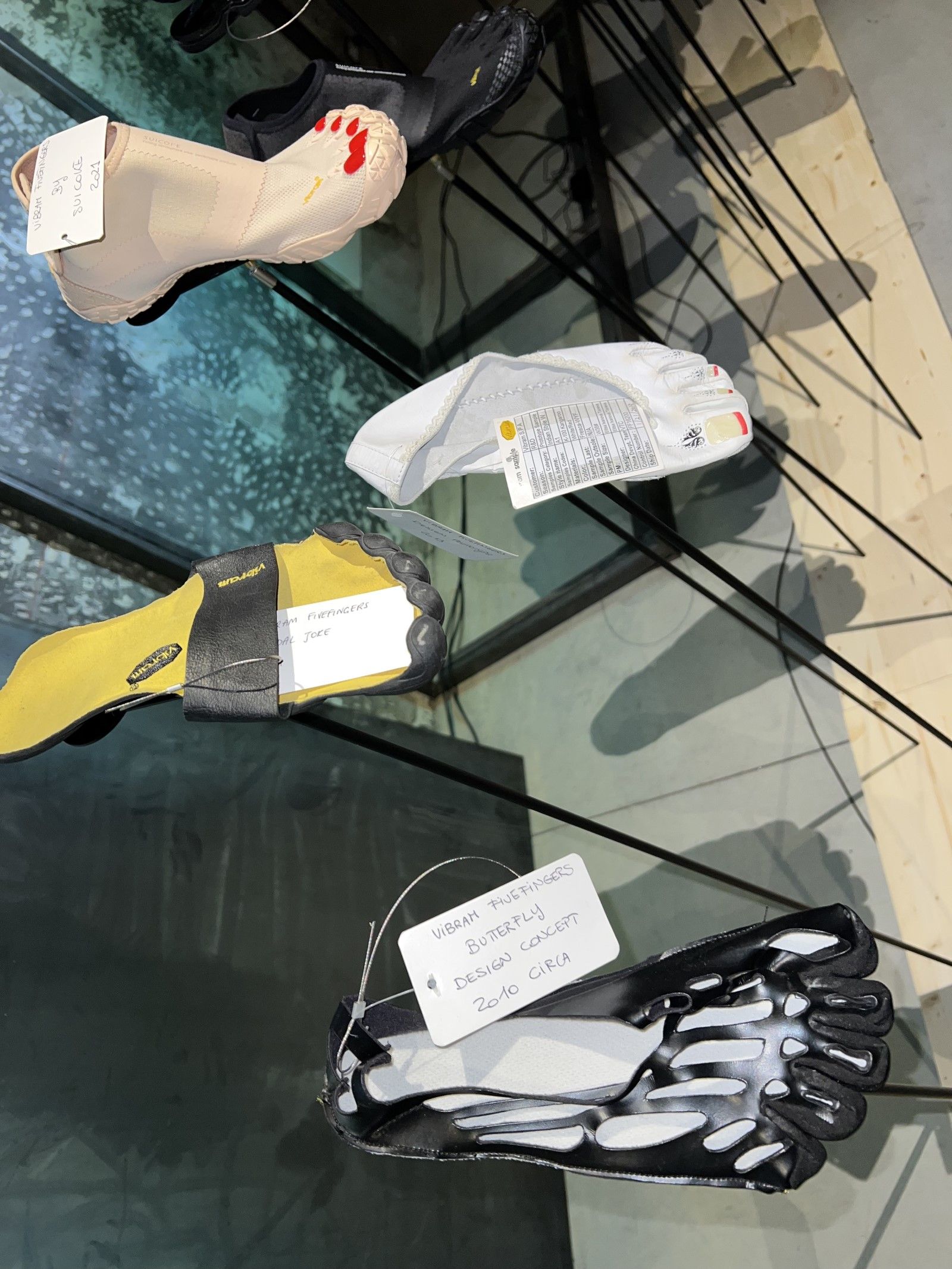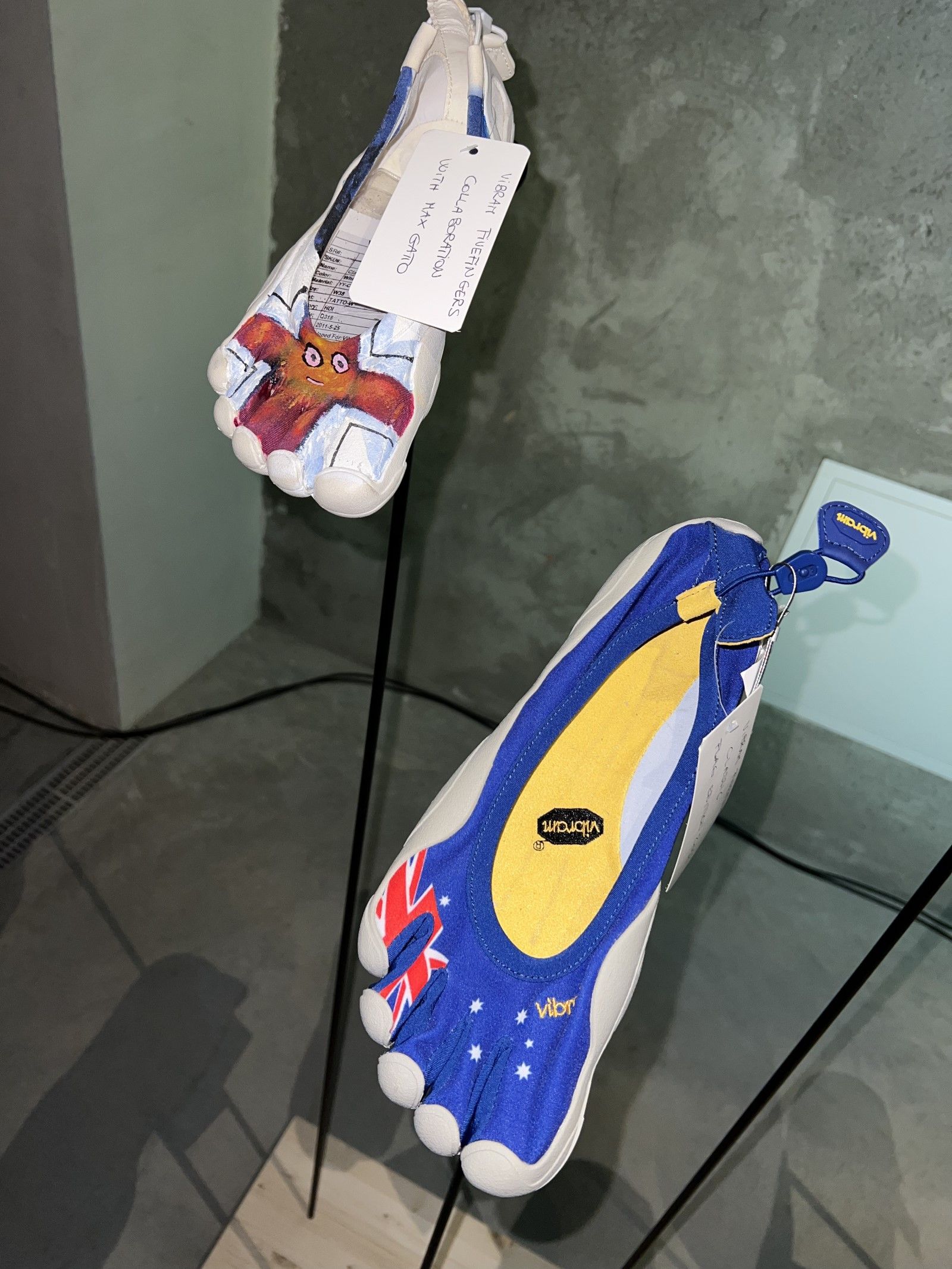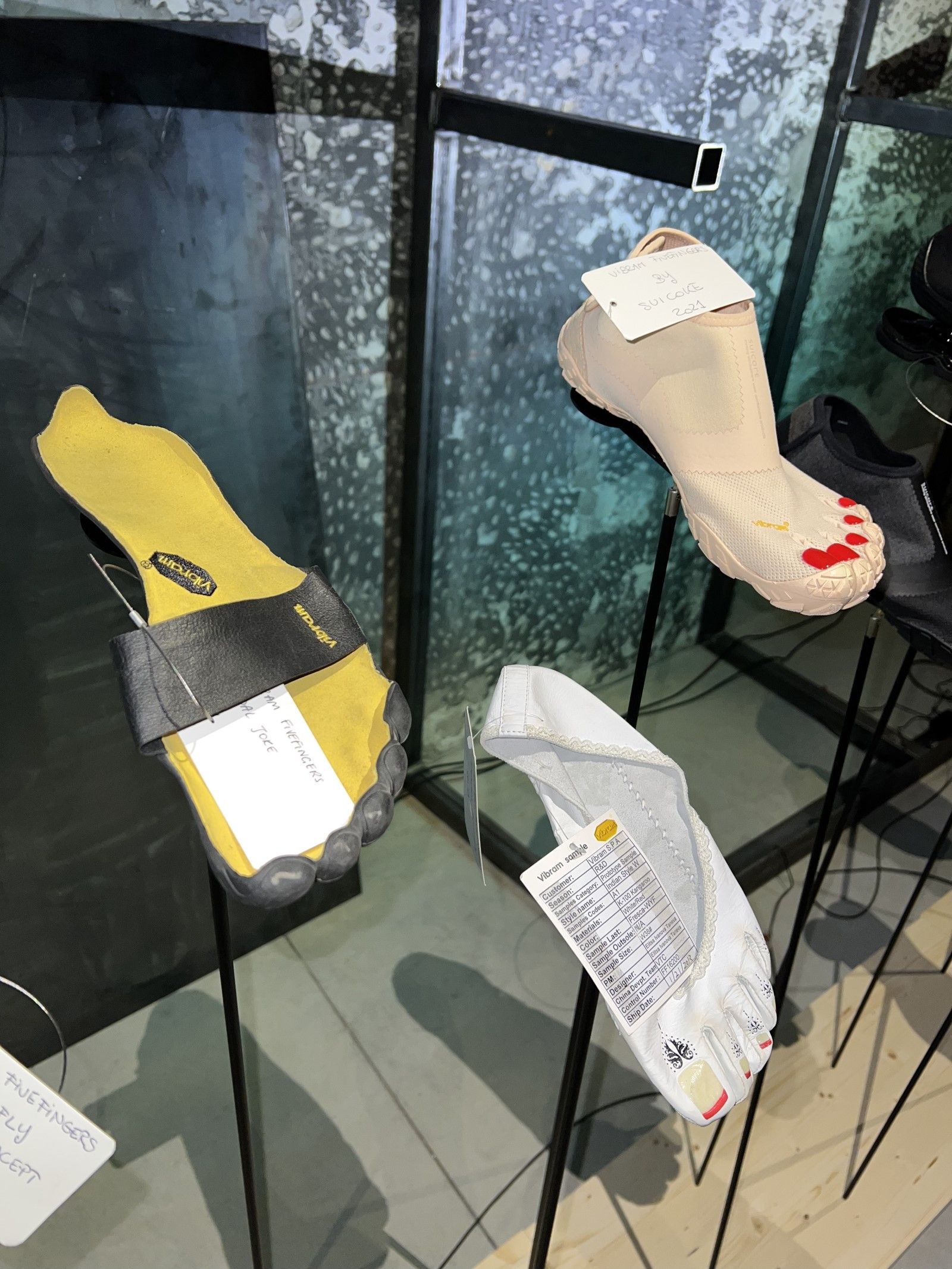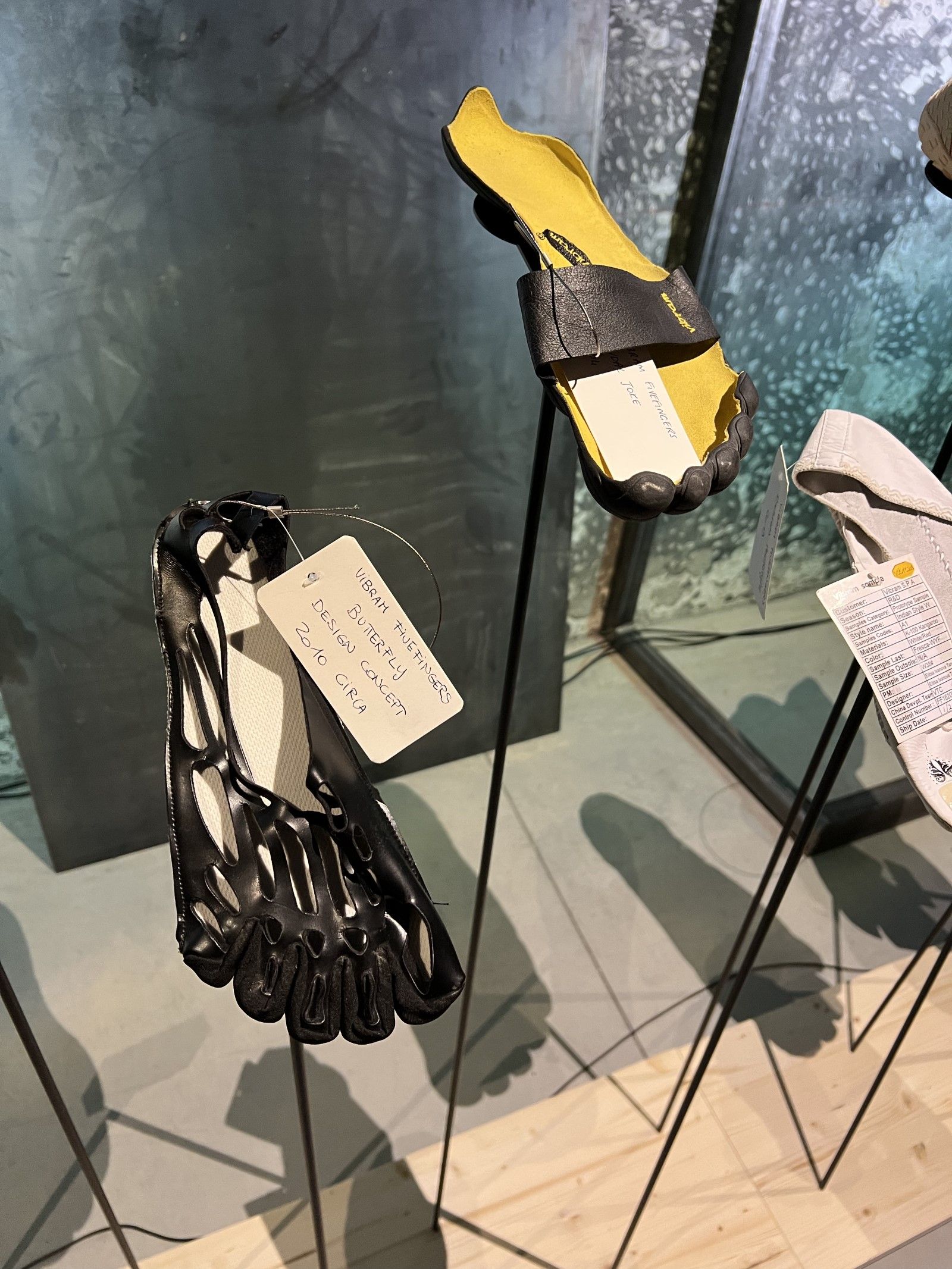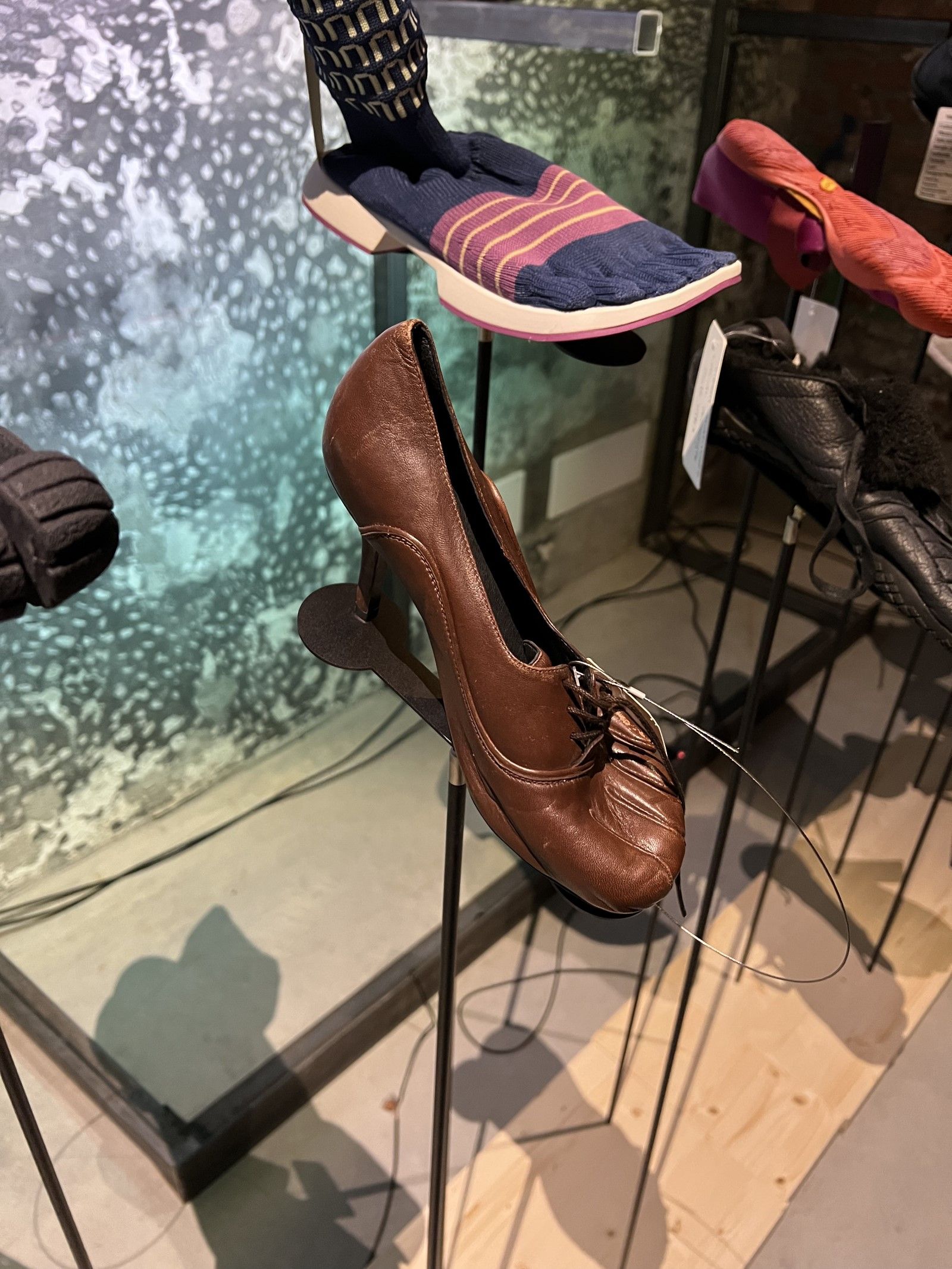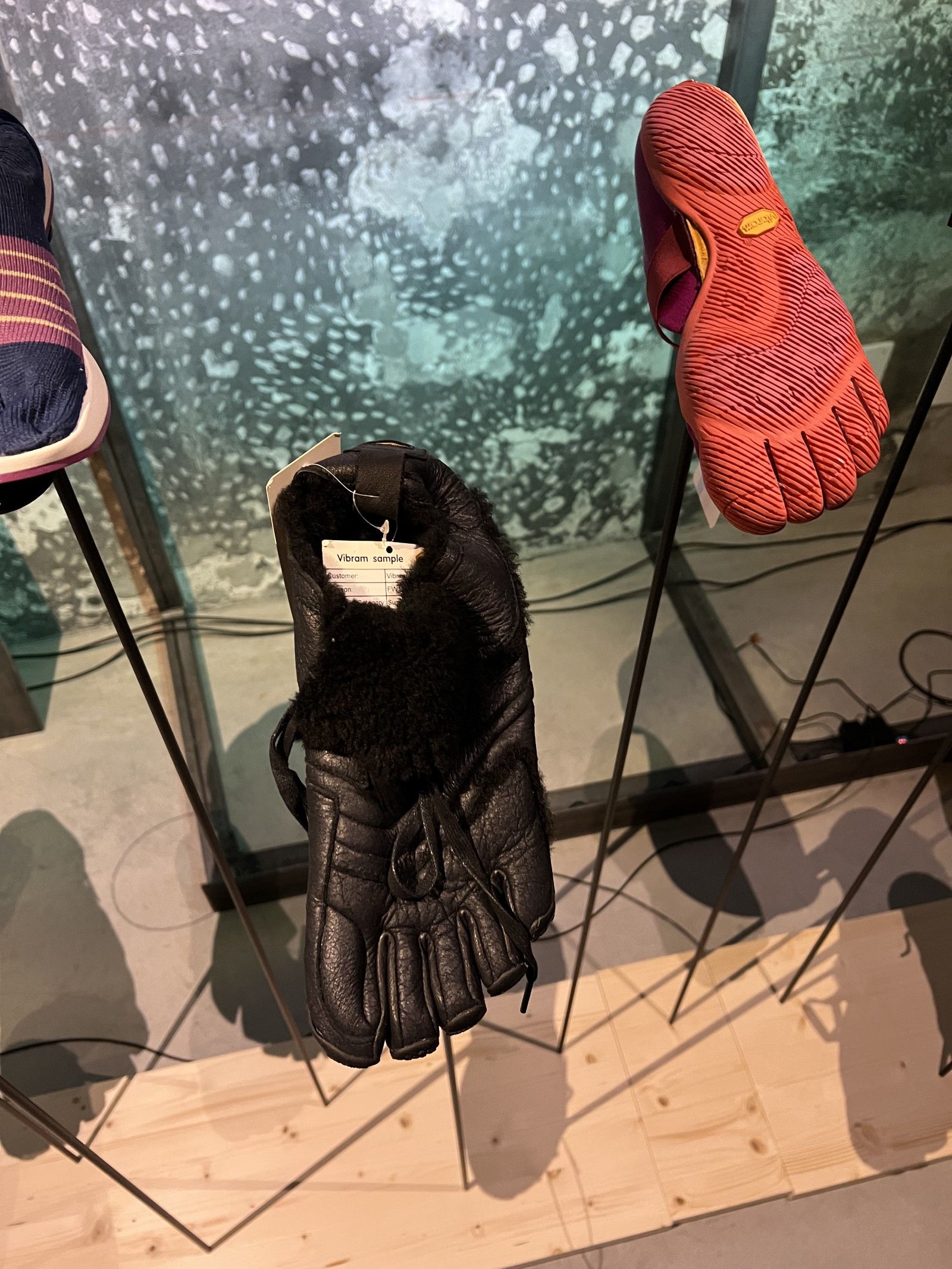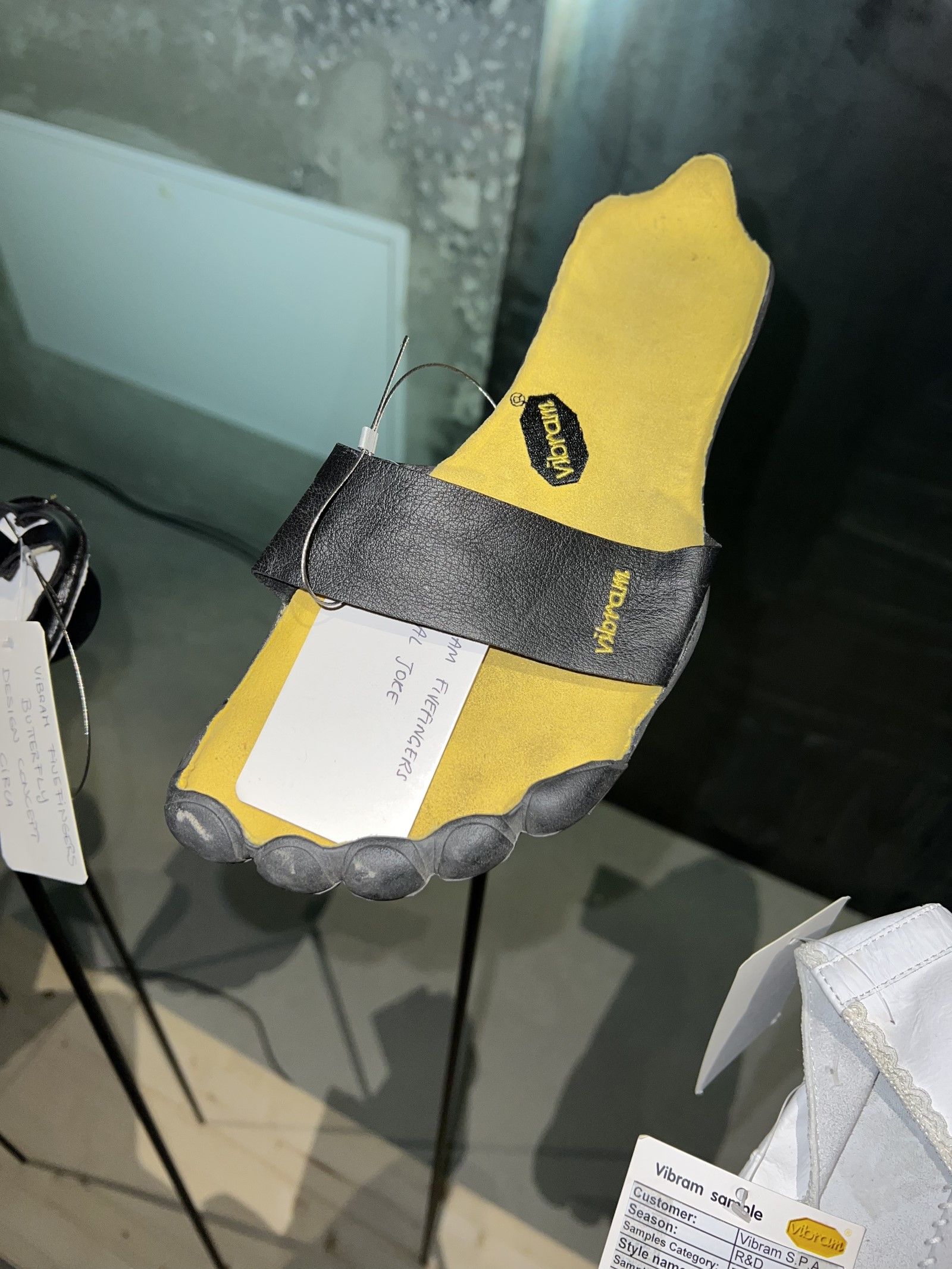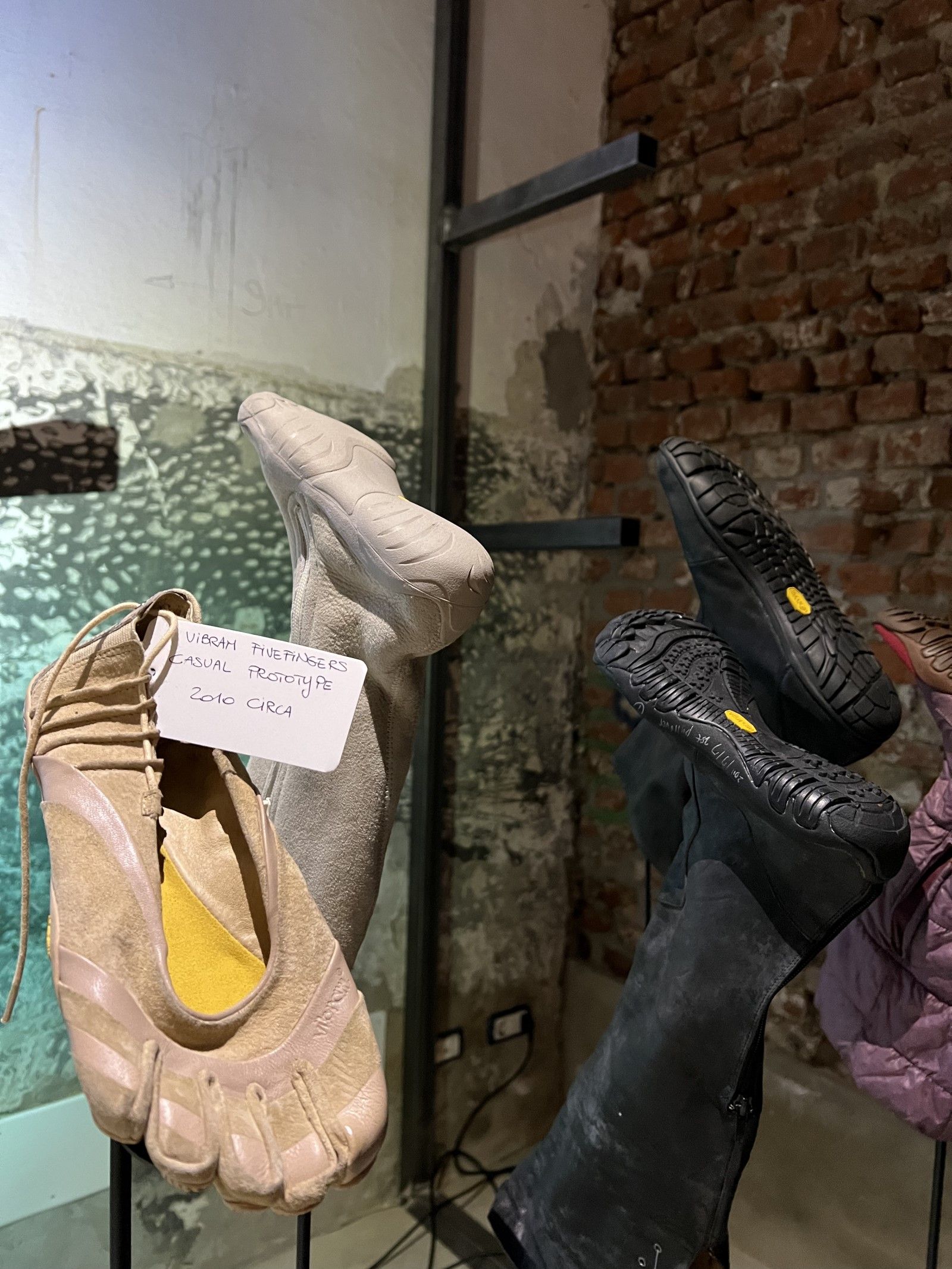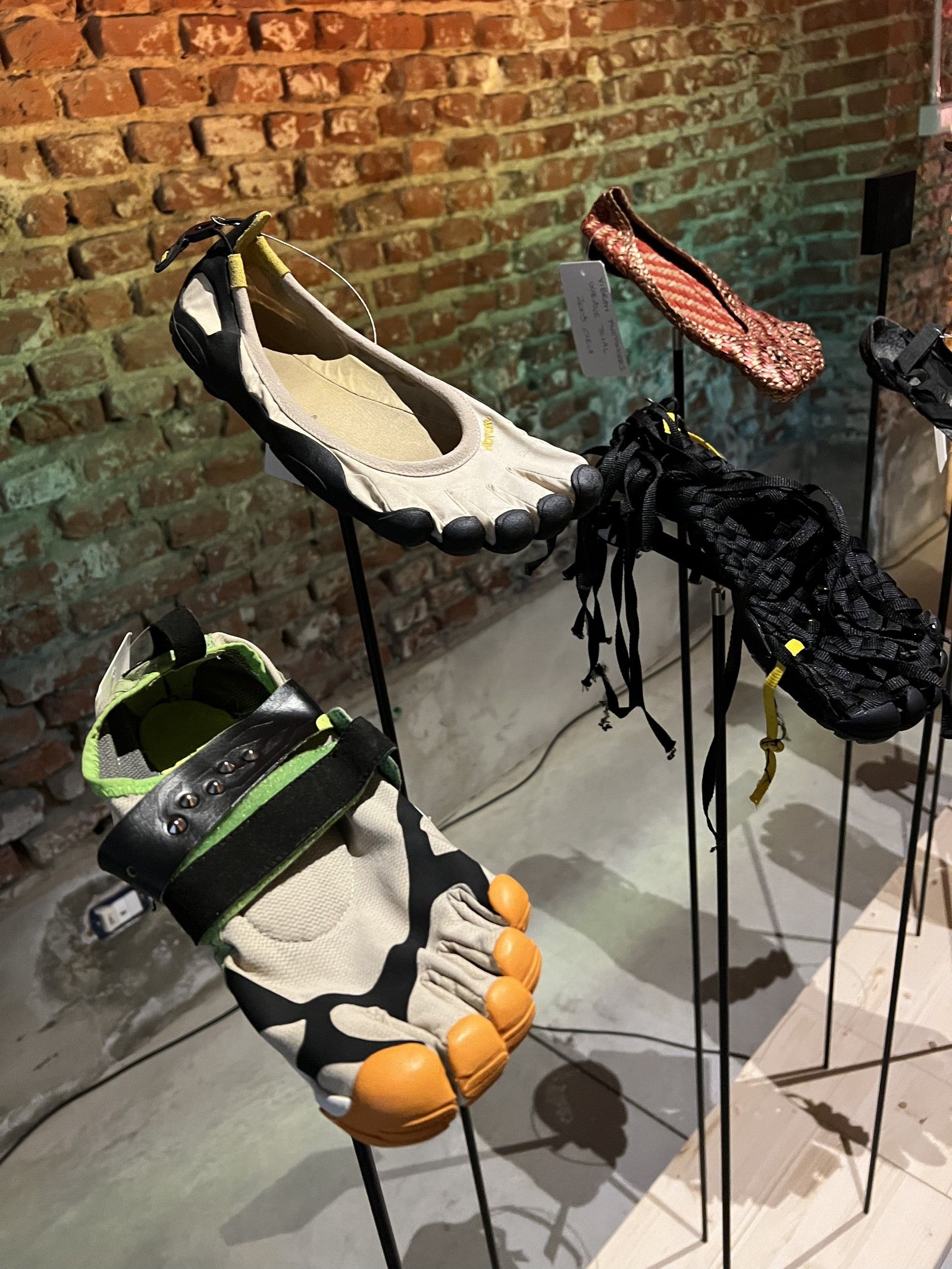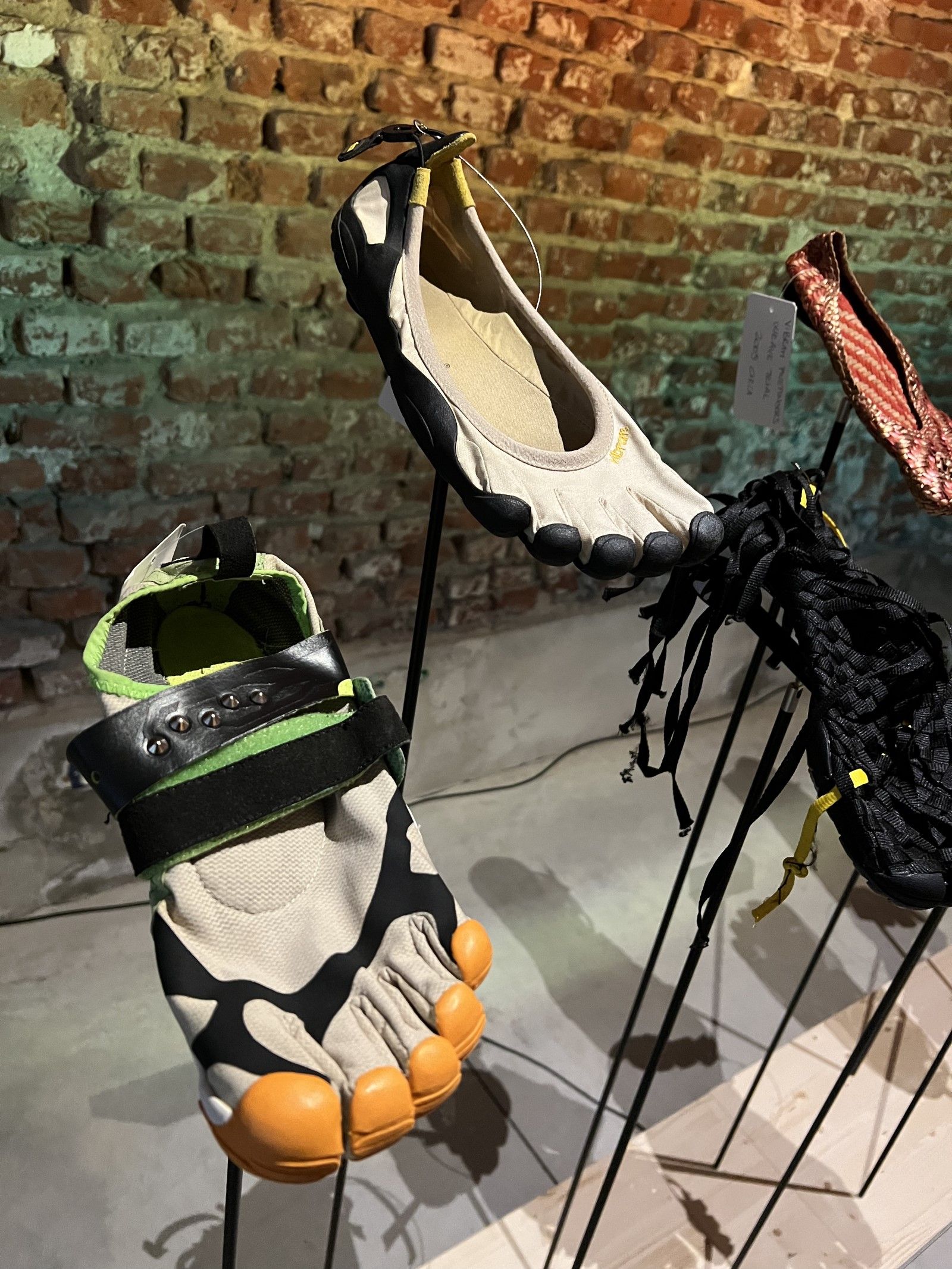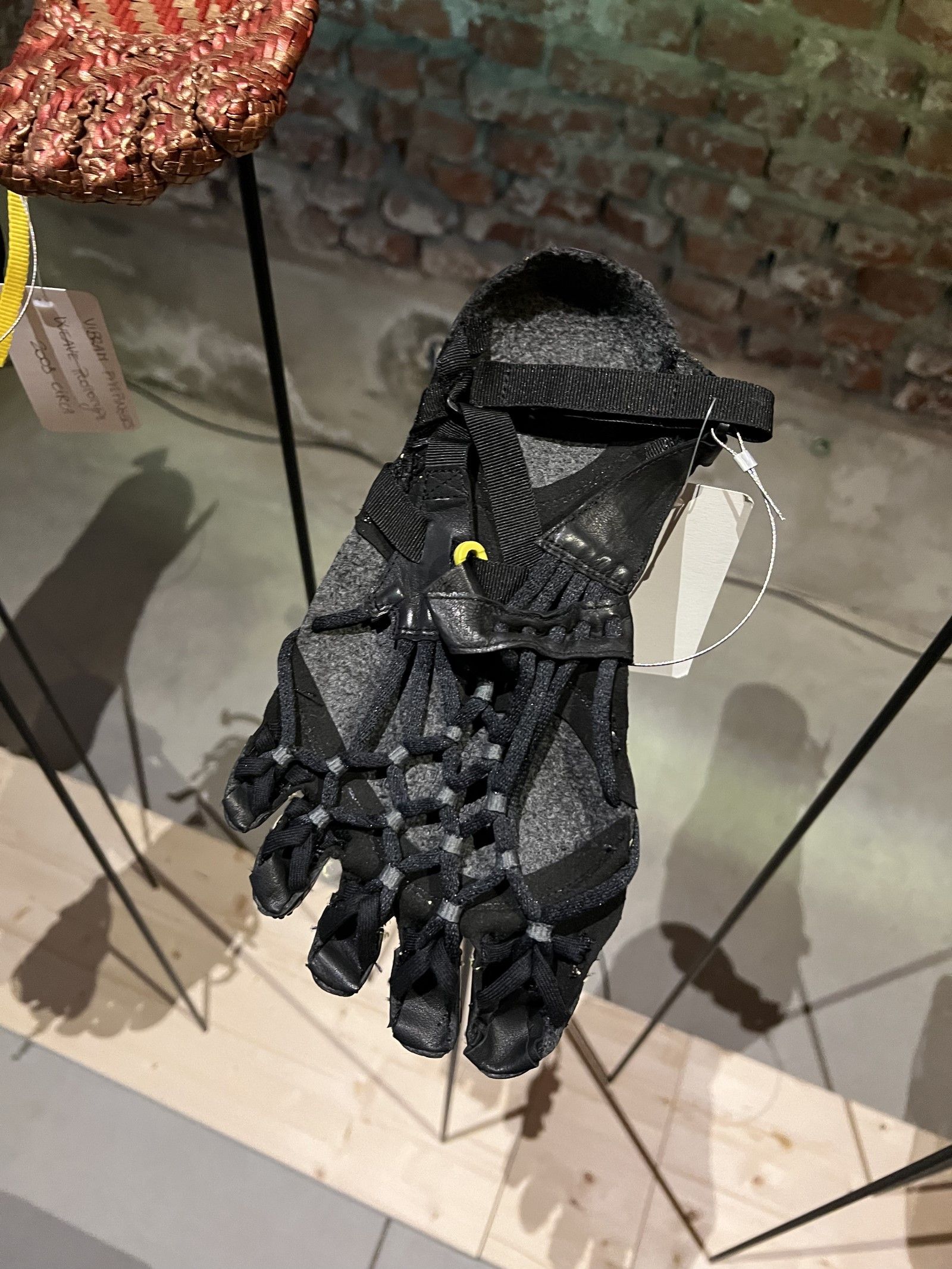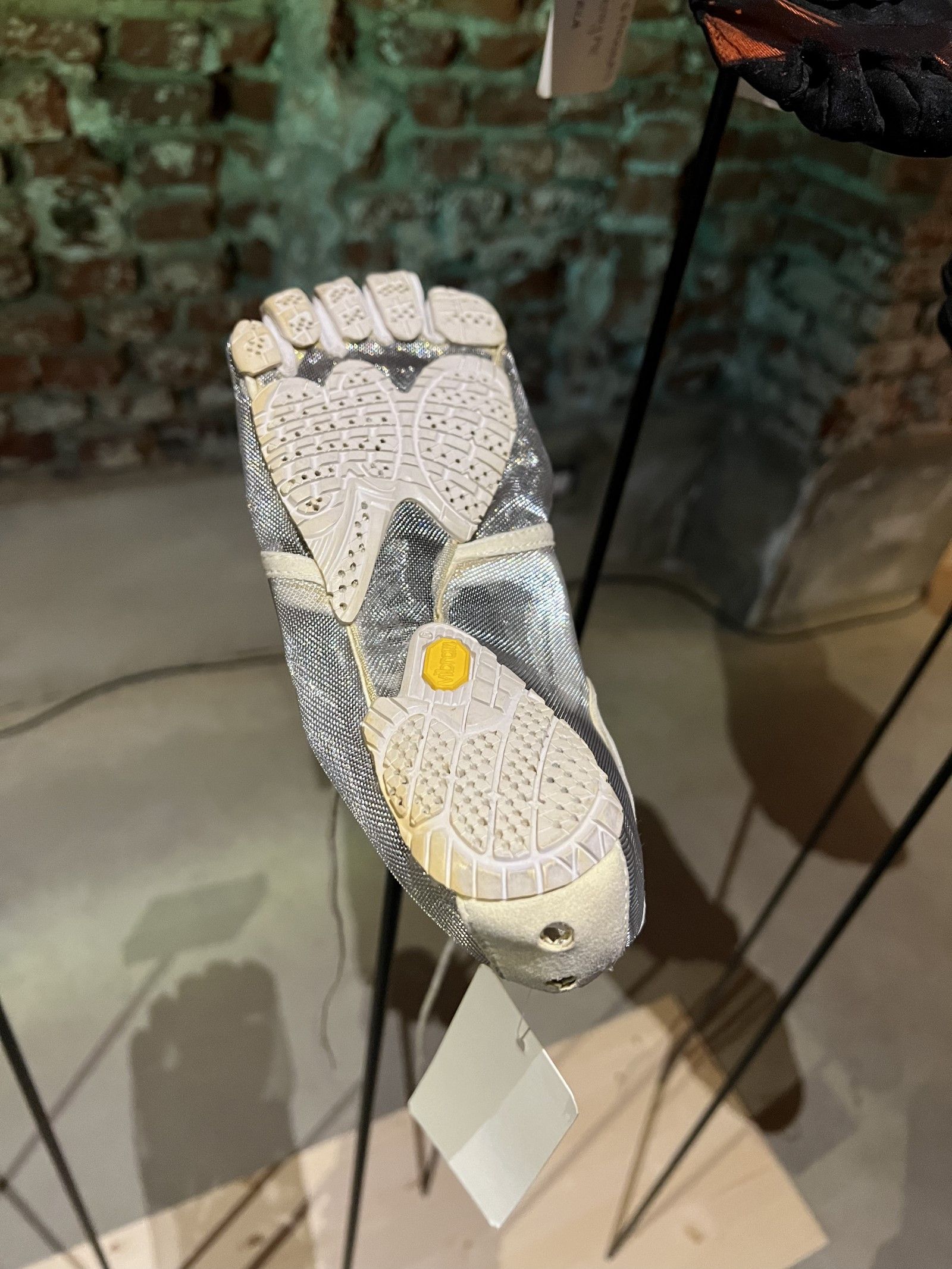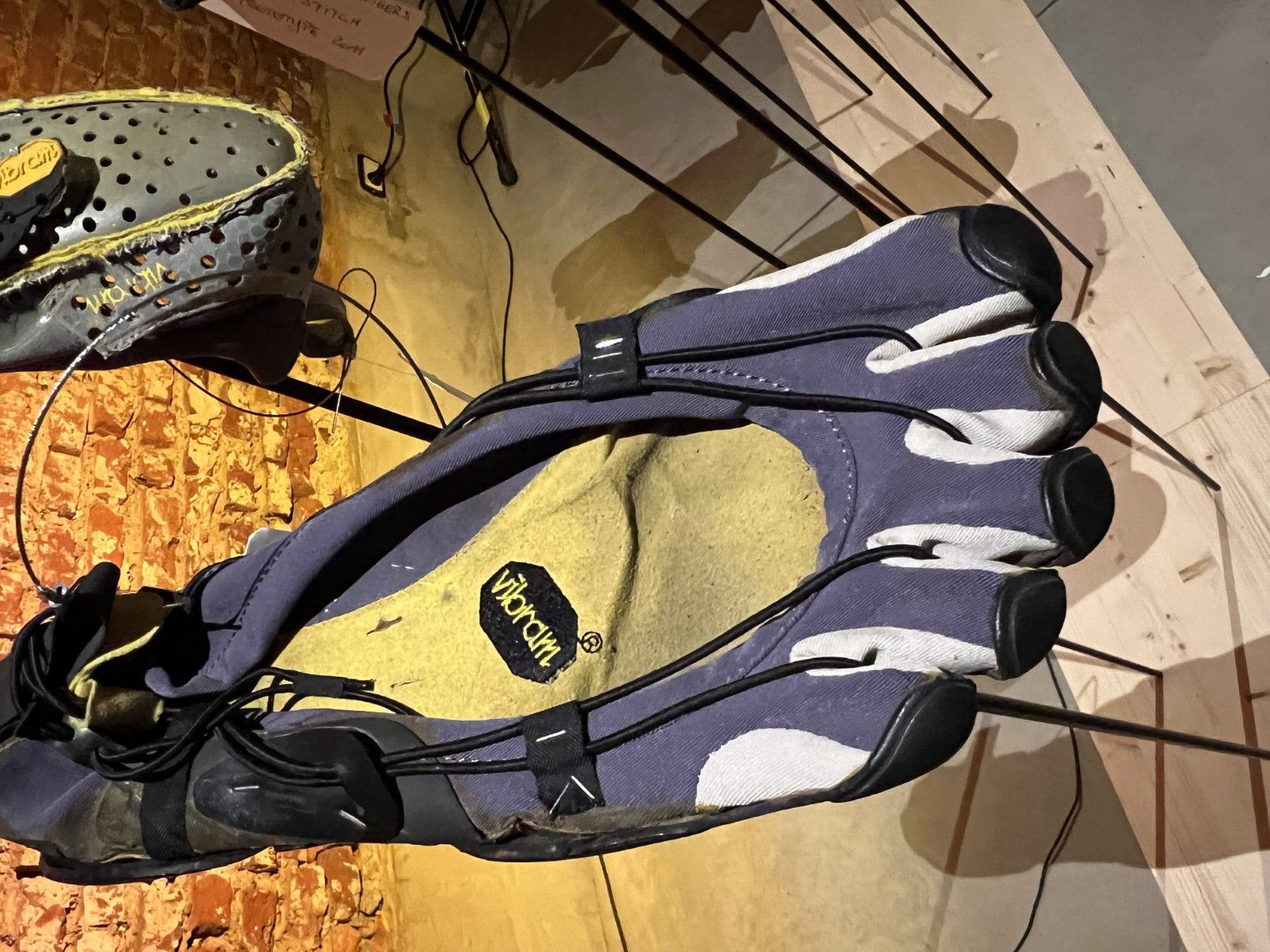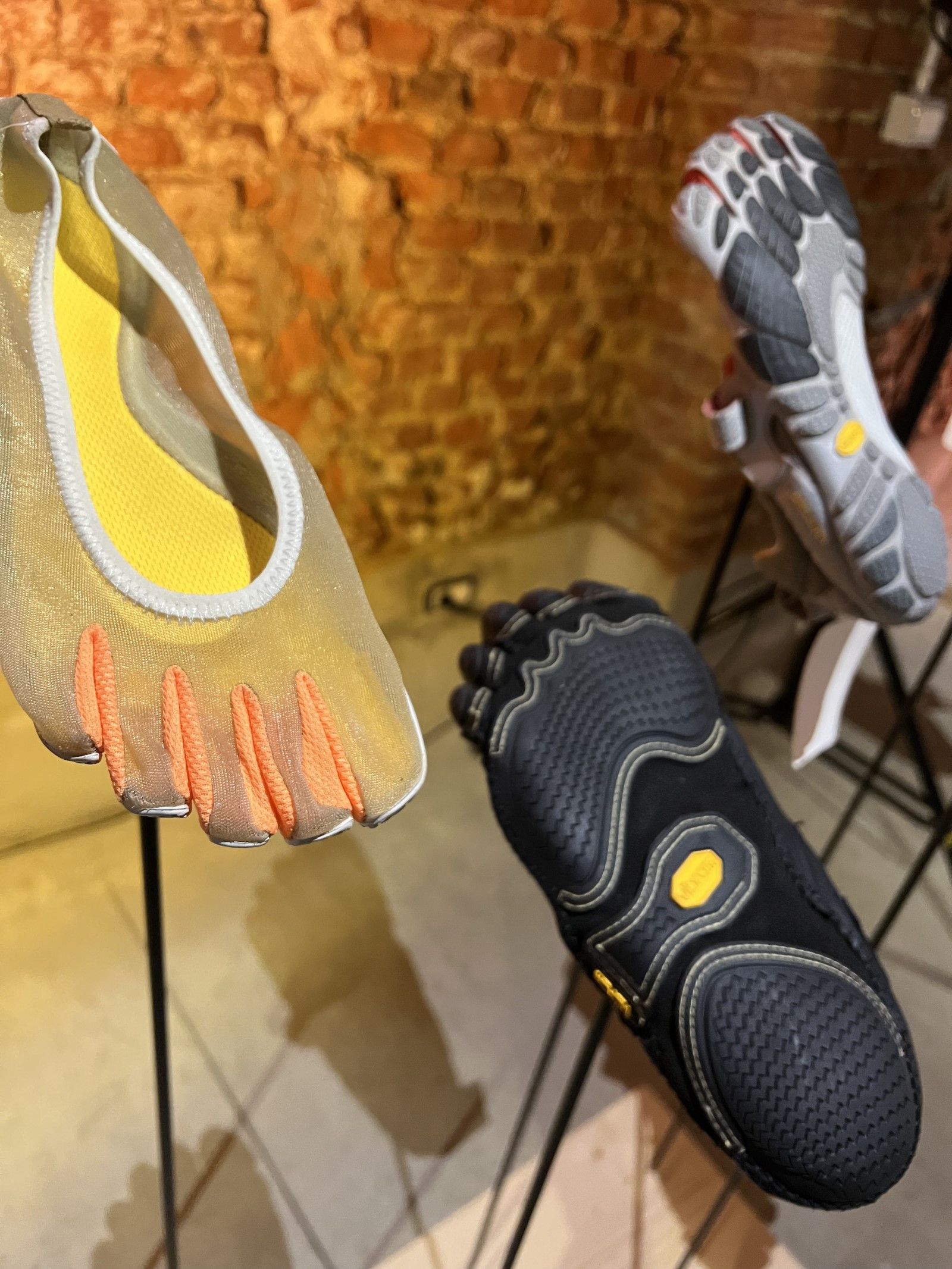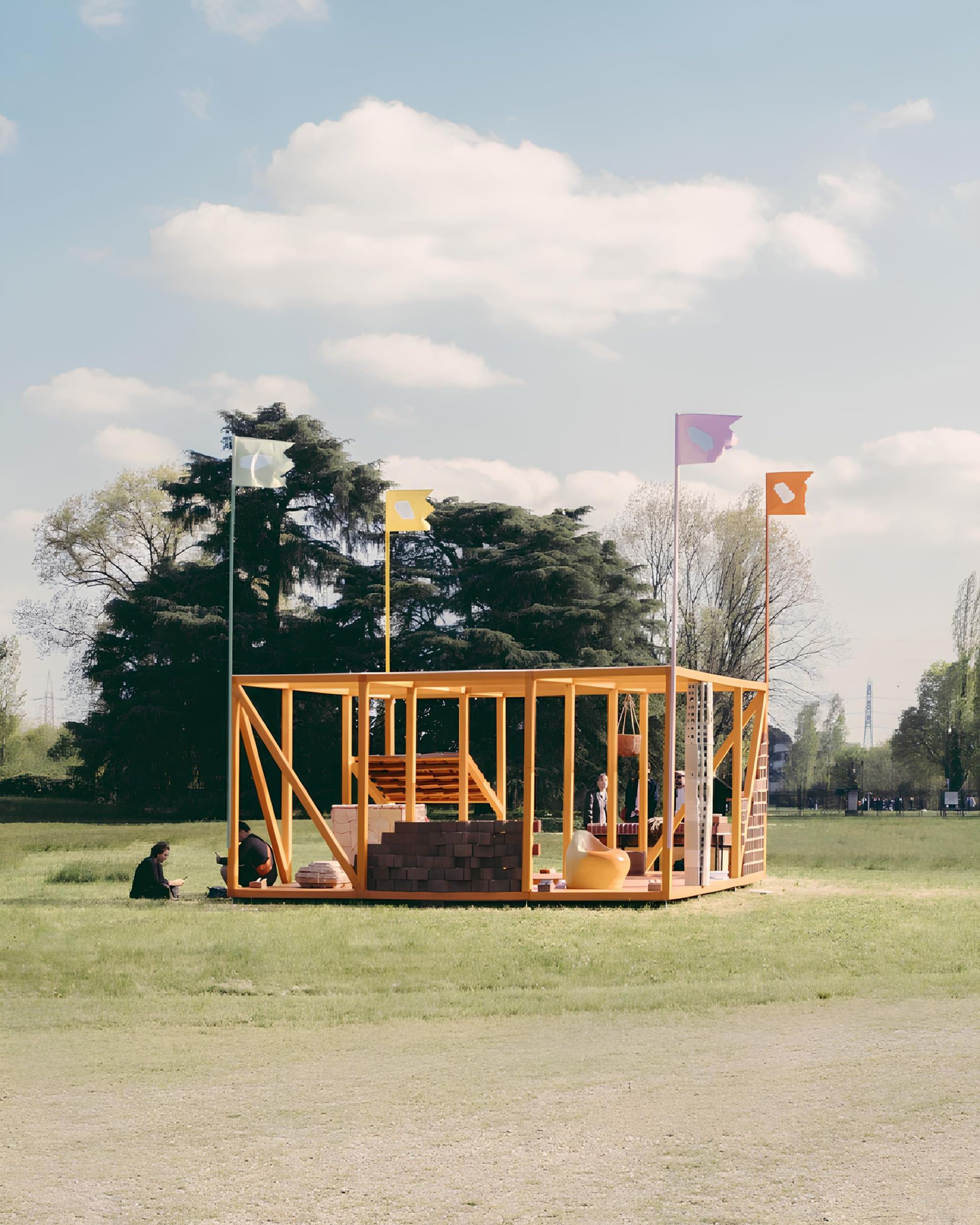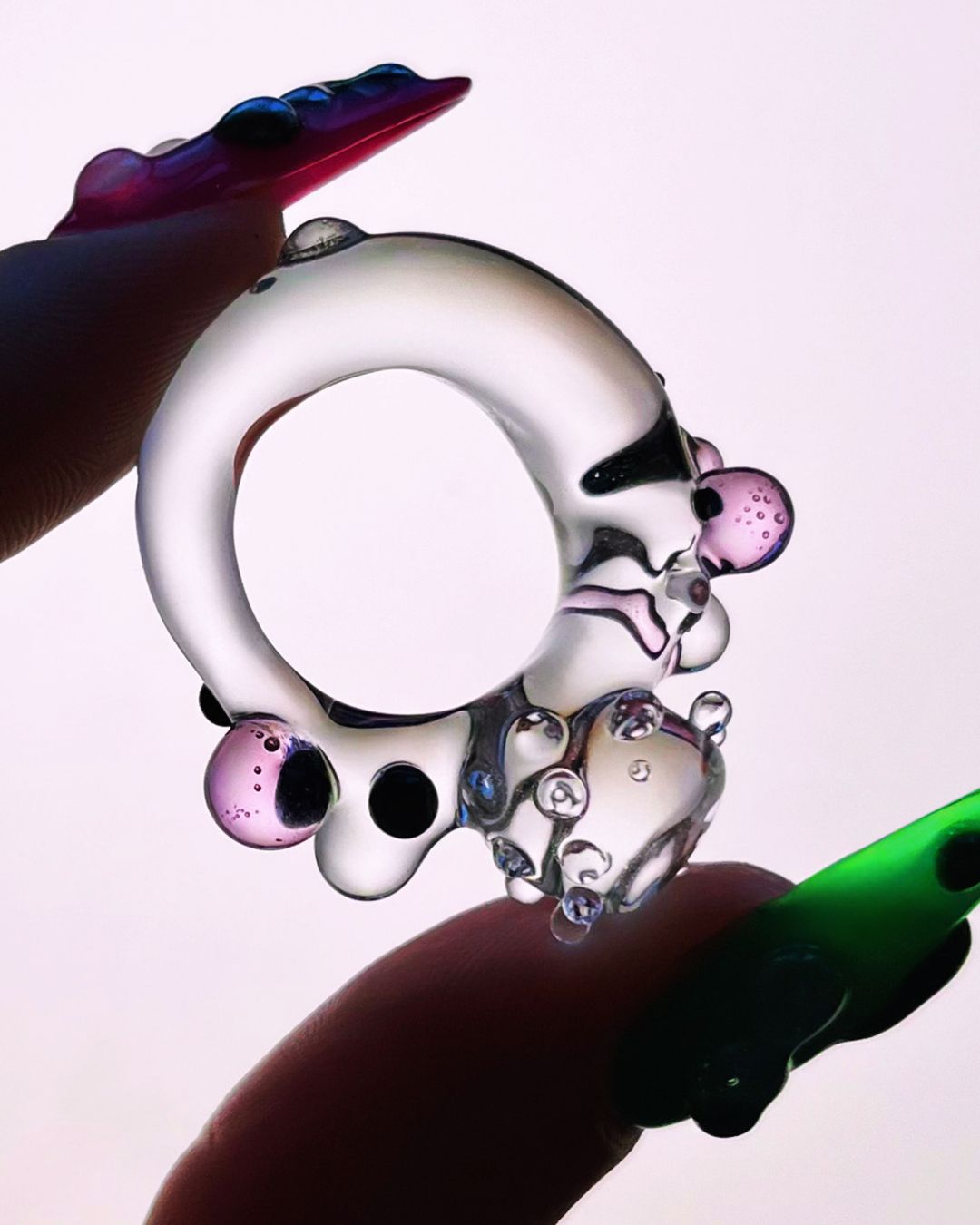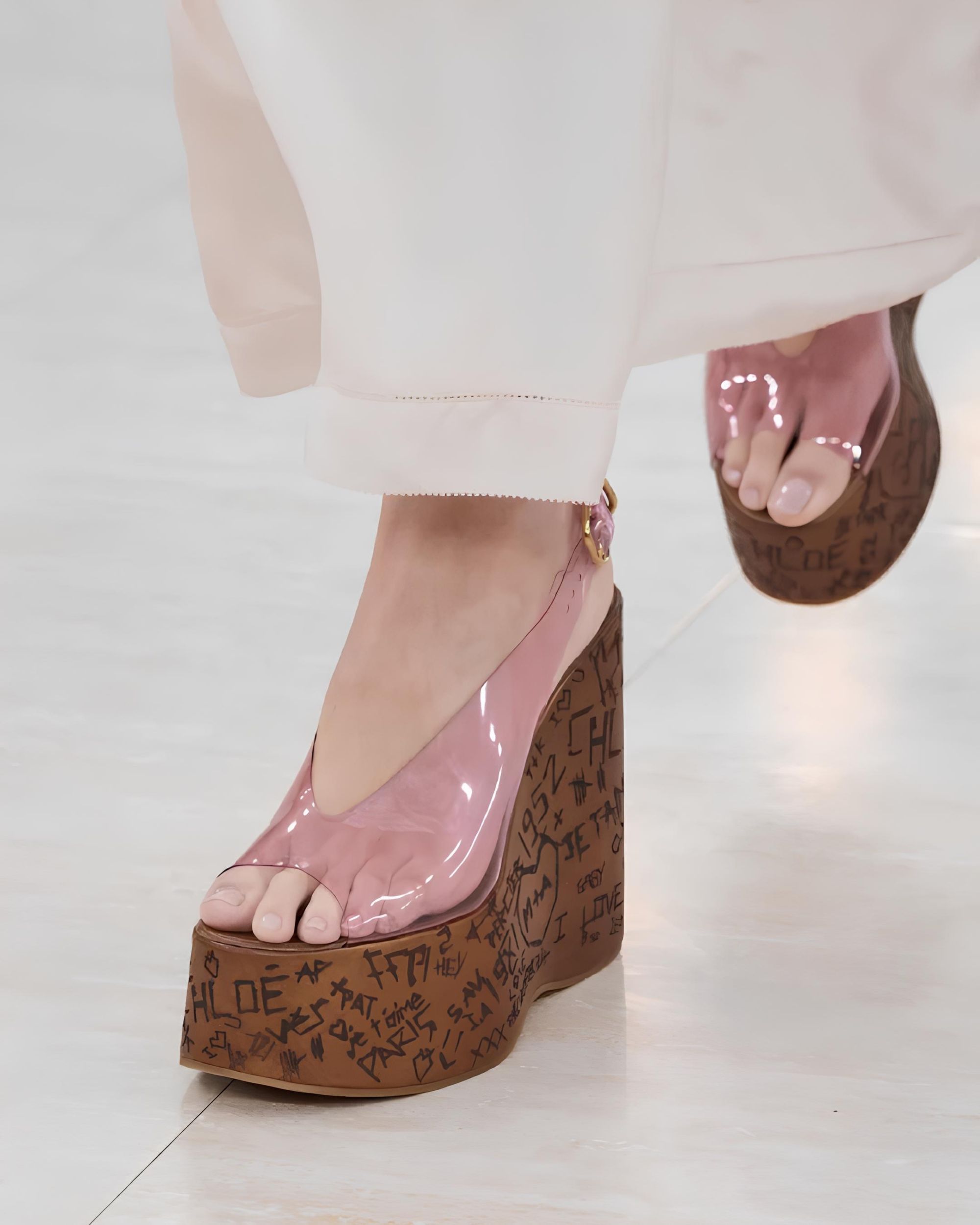
"Like being in the body of a deer": the Vibram FiveFingers as told by their creator We met Robert Fliri at the Vibram installation at last year's Design Week
«I felt like I was in the body of a deer, and no longer a human. An animal that instinctively jumps from one side to the other,» Robert Fliri, the inventor of Vibram's FiveFingers, which are celebrating their 20th anniversary this year and were celebrated with an exhibition in the Vibram Connection Lab in Milan tracing their history during last Design Week, told us. «We went looking for something that did not exist and still does not exist today in the minds of those who make shoes,» Fliri told the press in front of the first prototypes of the FiveFingers, created amid countless difficulties in an Italy of the early 2000s that was not ready to conceive of the shoe as «an object that is in itself a work of art.» At the time of the birth of those prototypes Fliri was just a student, and the difficulties had been many: he, a young designer, had conceived the future FiveFingers as a glove, the lab, on the other hand, was still thinking in terms of shoes. The first prototypes, in fact, were cut, sewn and created by hand, but the problem came from the fact that the shoe had to be produced industrially and therefore computers had to process from scratch the very complex technical design required to mass produce the FiveFingers. The solution came via classic plasticine, made into a one-millimeter film, molded on a mold and sent to China where it was scanned in 3D twice, with and without the plasticine, to create a technical drawing by subtraction.
A year and a half passed from the prototype to the first model, another two years or so passed from the first model to the first generation, with the historic KSO model, an acronym for Keep Stuff Out, the first FiveFingers "closed" to prevent the intrusion of stones and other elements. It is the most avant-garde and simplest model together, or as Fliri called it, «This is a tool. We put only functional elements in it. There is no decoration. This is designed as I would design an instrument-there are no ephemeral things, decorations, marketing. This is clean. Focusing on the essence, the real functionality, I like it when something is pure.» The first generation, however, is not all designed as a tool: in some members of this first "family," in Fliri's words, «you can see that Vibram likes to experiment» with fleece-covered FiveFingers, or models designed for children, or to the use of technologies such as tubular knitting for which there is not even machinery for mass production. Another family of FiveFingers is called Glove because it replicates the use of leather from driving gloves and malleable, lightweight soles that Fliri called «misunderstood by the market.» Around 2008 and 2010 the brand finally discovered the mass market for its FiveFingers: «The designer opens up to decoration. This is a running model [...], it already has a lot of ornamental design in it. We've also had more raw and aggressive models-but you can see that we've opened up toward the mass market with more widespread distribution and a lot more models.»
Alongside the family of FiveFingers that have seen the light of day, Vibram's archives hold other more experimental models, Robert calls them «technical try-outs», too complicated to make it to the mass market. «We have always tried to range toward whatever we can take». But there are others made of wool, others made of mesh, some sewn and glued, some made of entirely perforated leather, and some built like avant-garde sandals or constructed of entirely natural materials. One of the best models has a three-dimensional sole that began as purely decorative, a portrait of Marylin Monroe, but was found to possess incredible grip on the ground and so went into production. Here's how Fliri ends the journey:
«When the U.S. success has projected us toward a very sporty use, it has also somewhat taken away our focus on more aesthetic or fashionable products. That's fine with me because I think it's a functional design. And this is the most interesting side of this company where the design and technical interest marries a madness, or for others creativity, extraordinary that always creates a tension between the two poles.».










































